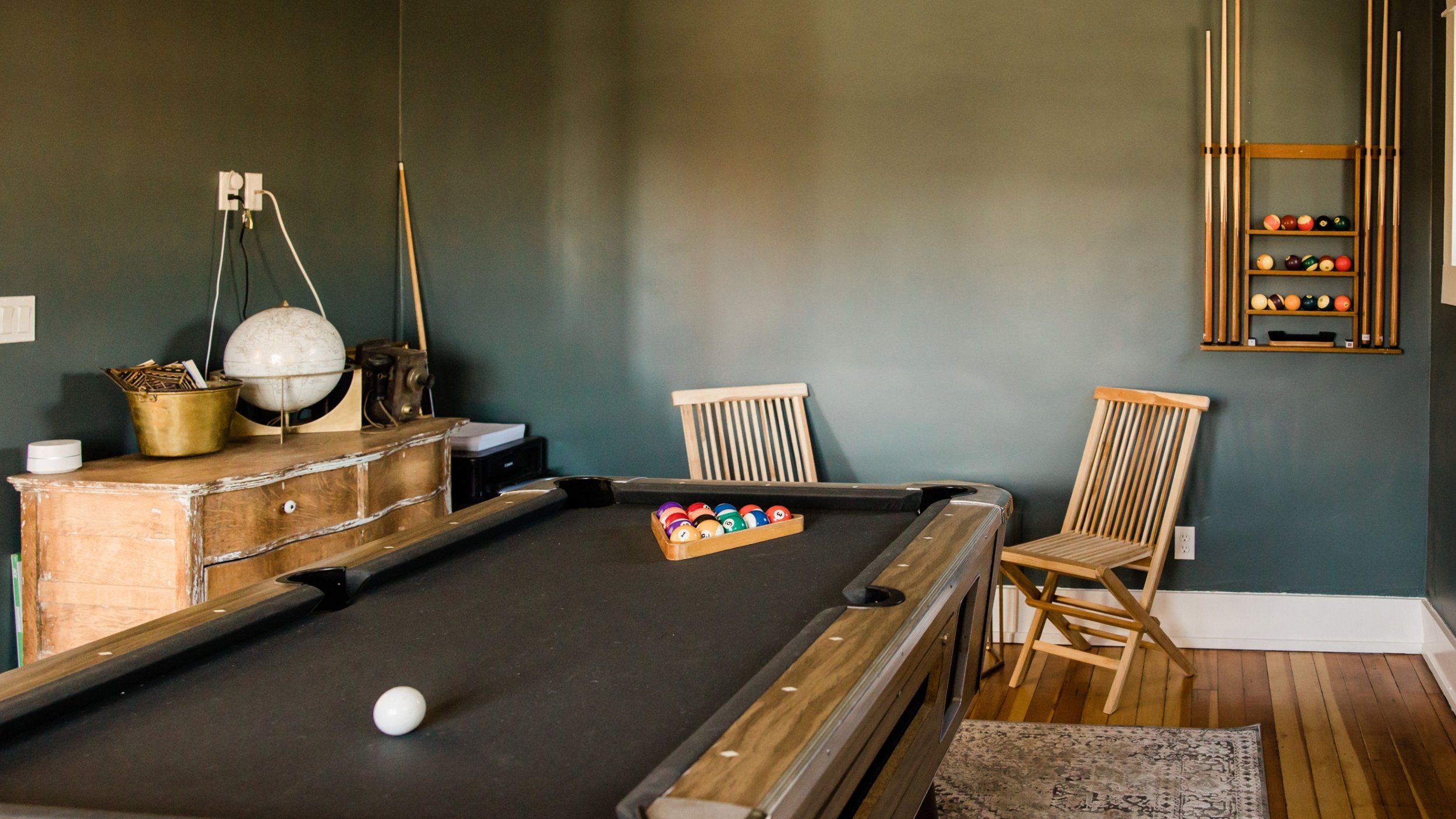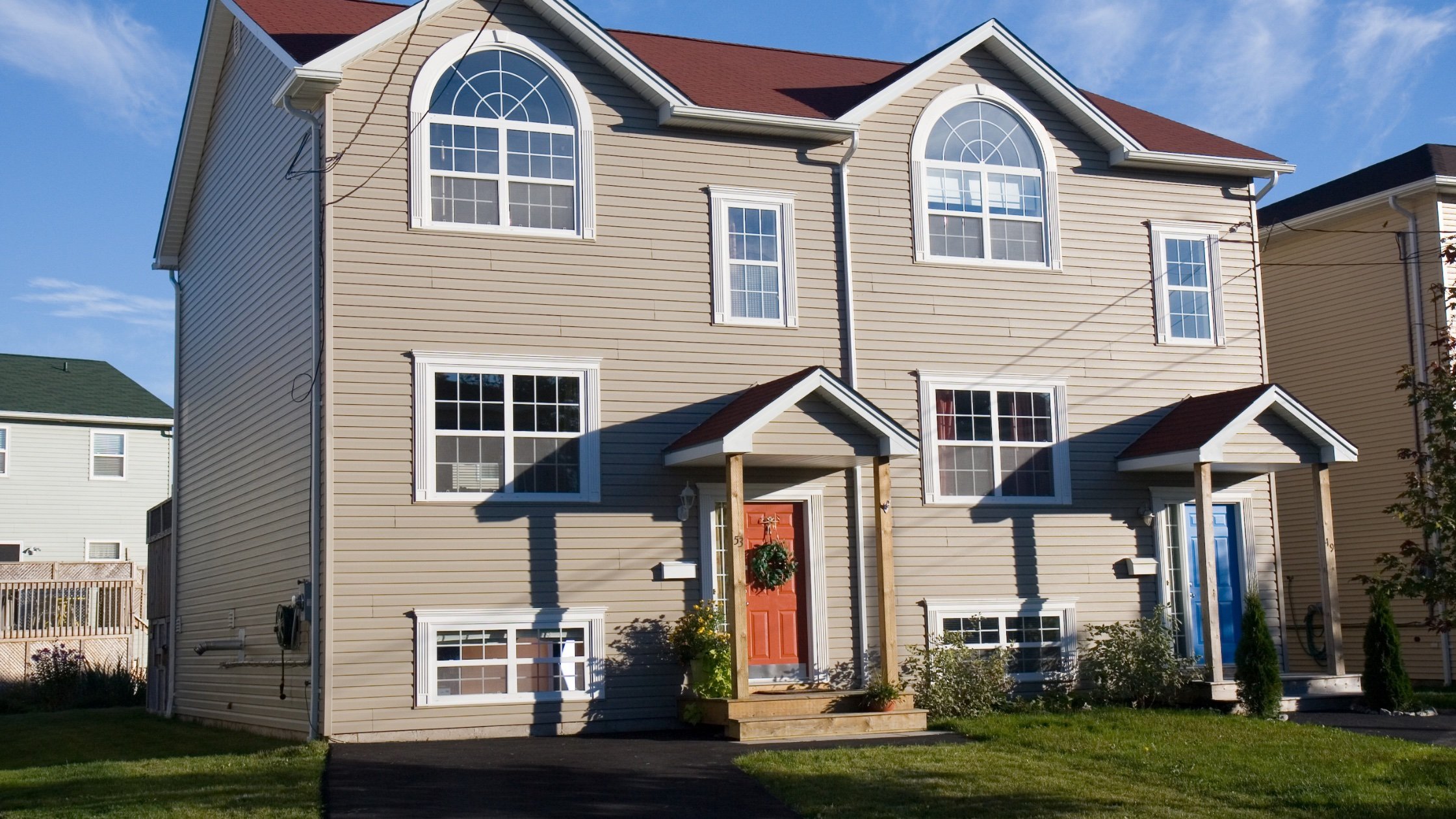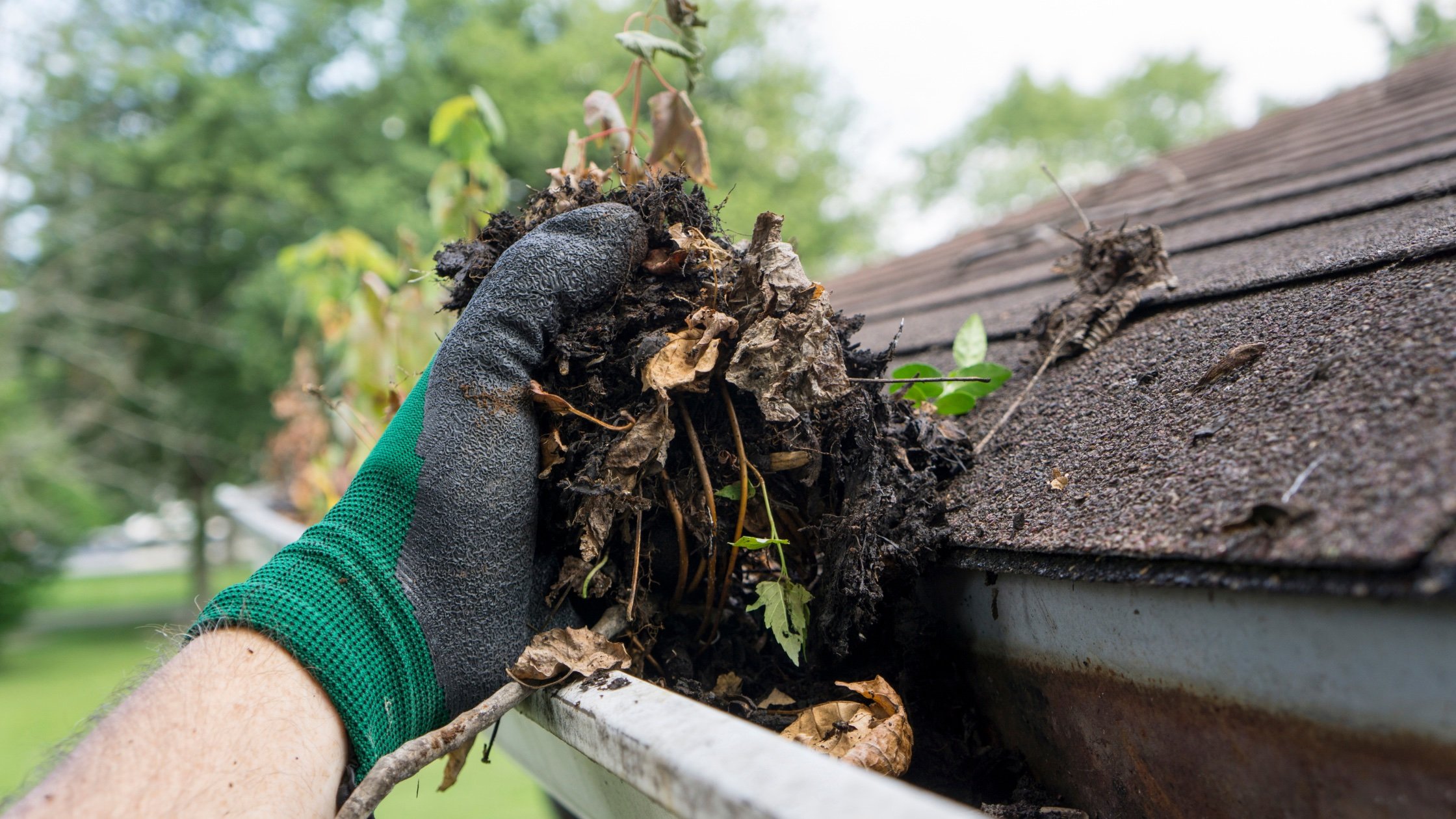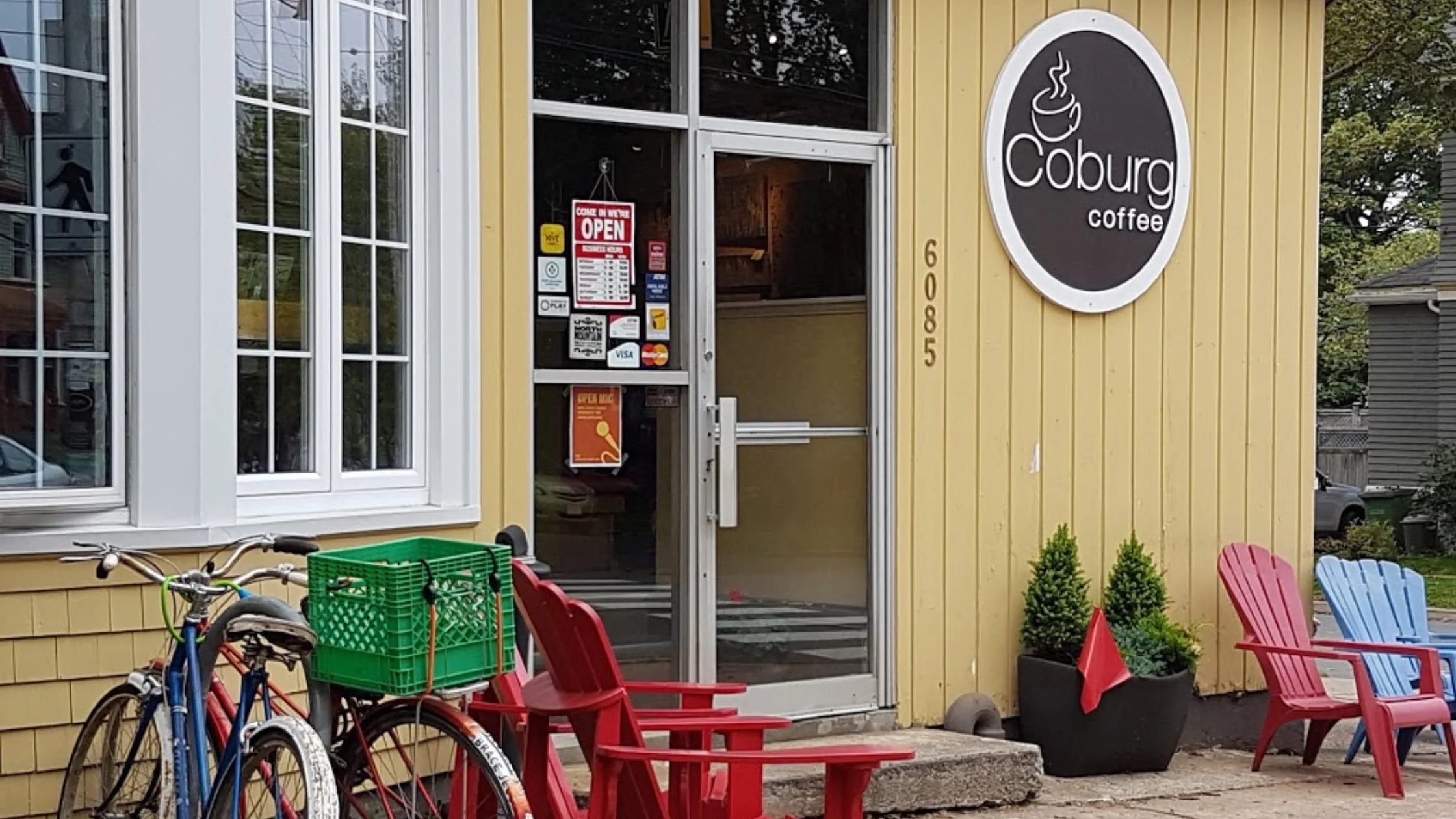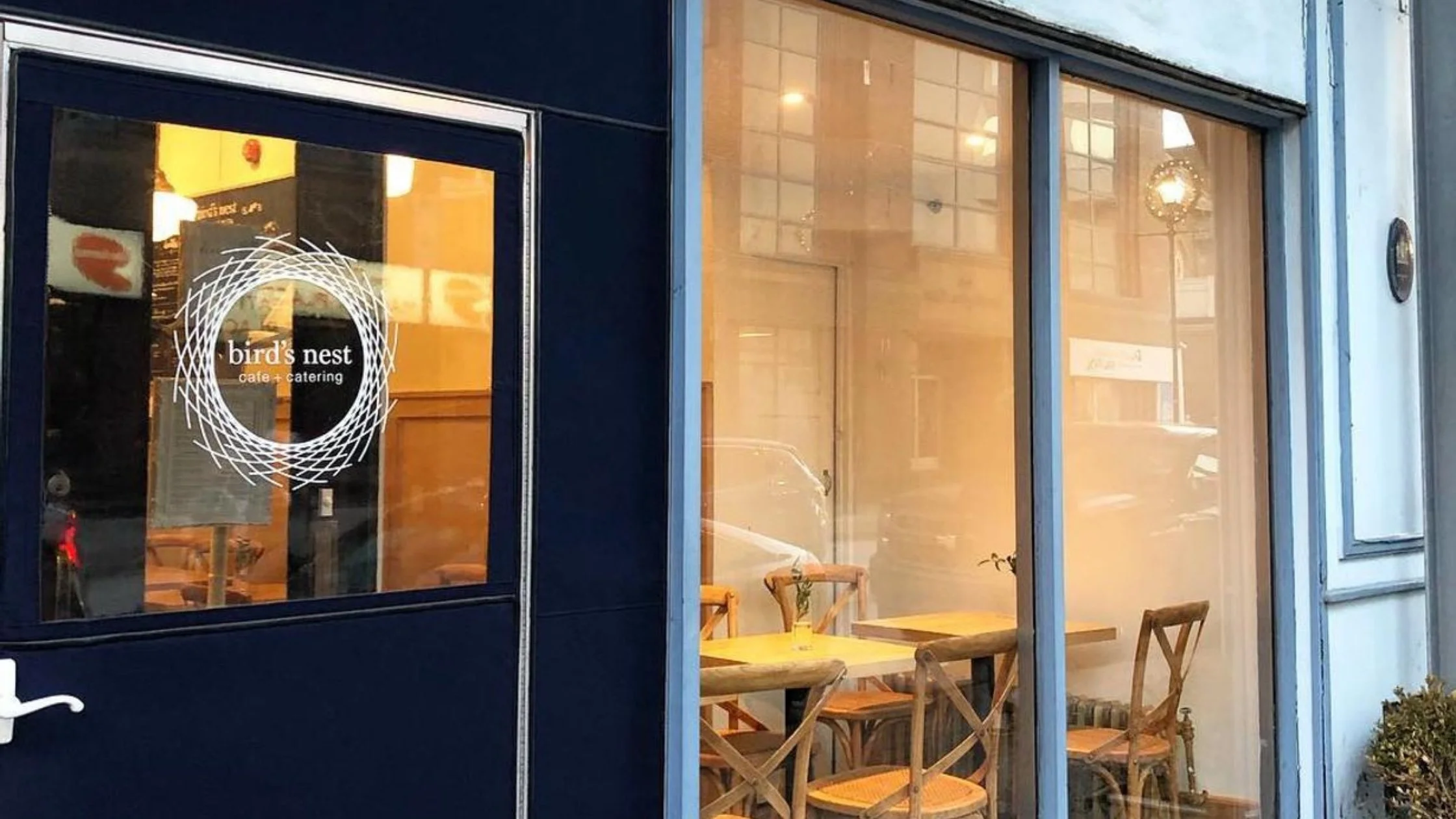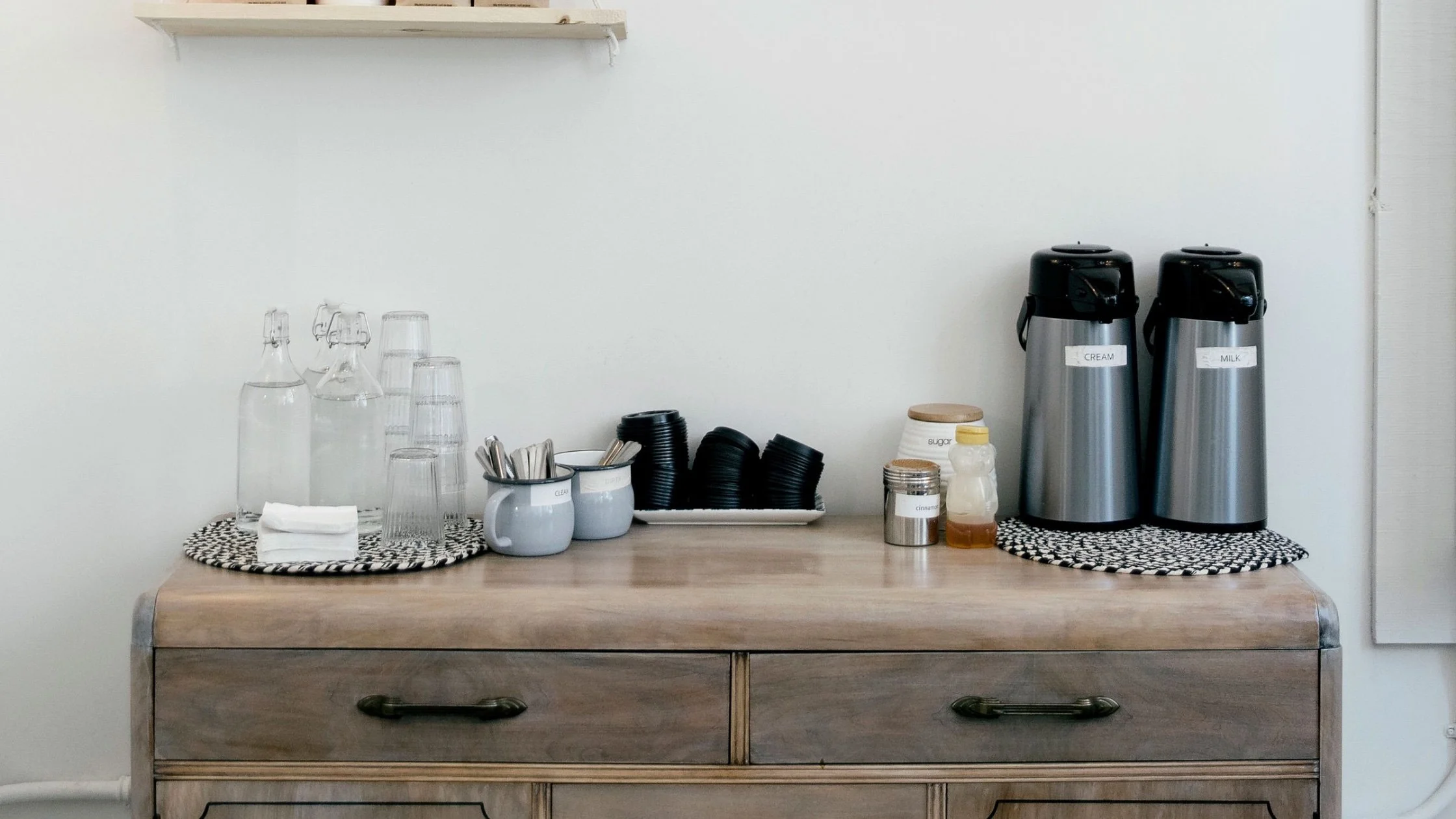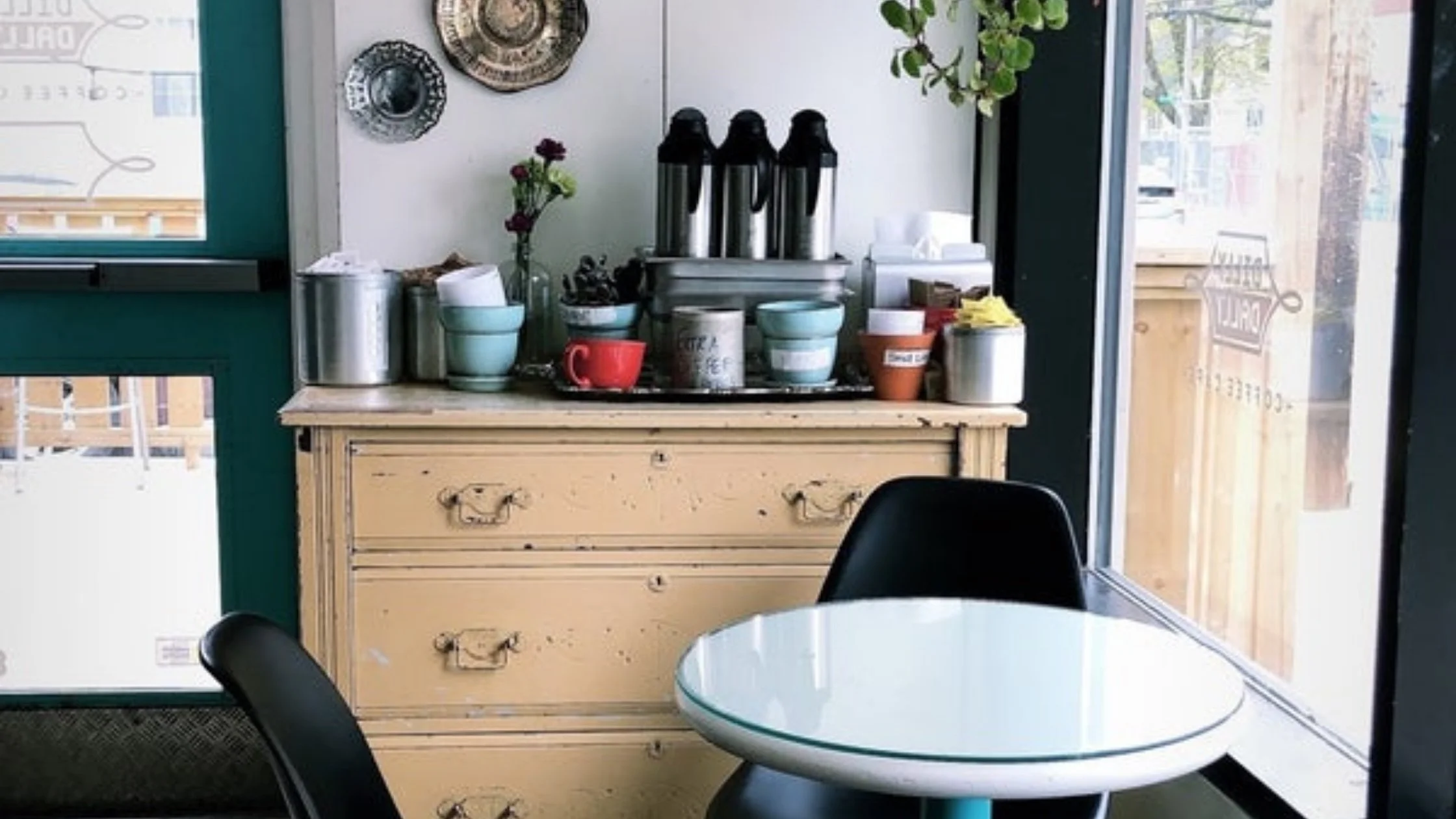Halifax Bears Down on Short Term Rentals
Short Term Rentals (STRs) like AirBNBs and Vrbo Homes have become equally popular accommodation options as traditional hotels when planning vacations. Not only do they make great options for tourists due to added space, rooms and sometimes amenities (pet-friendly, pools, themed rentals etc), but they are great investment options too! Short-Term Rentals, when managed properly, can generate thousands of dollars a month in revenue.
While short-term rentals are a great option for tourists and investors alike, our city is in a housing shortage. We currently have a vacancy rate of less than 1% for long-term rentals and only 602 properties for sale. In response to this shortage, our municipality has recently placed new restrictions on short-term renting, in hopes to free up some properties to house residents. If you currently own a short-term rental property, are looking to invest in one, or have one booked for a future vacation, this blog post is for you. Read below to learn how these new restrictions impact short-term renting.
As of February 21, 2023, Halifax Regional Council established regulations for short-term rentals. You should note, these amendments still require ministerial review before being considered official. If they do pass review, these new regulations will take effect on September 1, 2023.
What is defined as a short-term rental?
Short-term rentals are temporary overnight accommodations rented out for a few nights or weeks at a time. The province officially defines short-term rentals in their Tourism Accommodation Registration Act as “the provision of roofed accommodations to a single party or group, for payment or compensation, for a period of 28 days or less.”
What are the new rules?
STRs will only be allowed at the host’s primary residence. This may include backyard suites. Any secondary or subsequent properties will be prohibited from Short-Term Renting.
STRs will still be allowed in commercial or mixed-use zones where tourist accommodations are already permitted.
Short-term renting of an individual bedroom within a primary residence will be permitted.
Existing provisions related to parking, bedroom limits and maximum signage requirements for bed and breakfasts will be extended to short-term bedroom rentals.
All STRs will be required to be registered by April 1, 2023.
Where are we currently in these new regulations?
Council has recently approved the first reading of these new regulations. Next, staff will return to the council in the upcoming months to present a report regarding the implications of allowing STRs in backyard suites, and will provide additional details on how these new regulations will be enforced. Staff are also working to explore approaching tourist accommodations in rural parts of the municipality, as many of these properties may be exempt.
Whom should I contact if I have questions?
You can read the full report on these new regulations here.
If you still have questions on how this will impact your property or future travel/real estate goals, you can contact any of the following:
Jill MacLellan at maclelj@halifax.ca;
Jamy-Ellen Klenavic at klenavj@halifax.ca
Brandon Umpherville at umpheb@halifax.ca
Or, if you have a lawyer you typically work with concerning your properties, they can also assist you with current or new regulations.
Or, you can always reach out to us!
Stay tuned for more updates concerning Short Term Renting in Halifax!
Jordan Gunn
Licensed Real Estate Assistant
The Andrew Perkins Real Team
Keller Williams Select Realty
Selling Your Halifax Home in the Digital Age
Before the rise of digital advertising, the REALTOR® Standard in any given listing was to stick a sign in the front of the yard, maybe pay for an ad in the local paper, and conduct an open house to get your home sold. This was all it took to find a buyer, as the traditional way of house shopping was to check the paper or drive around the city.
Now, everything has changed.
According to Matterport, a company with cutting-edge technology to advertise listings virtually, 90% of buyers across all demographics use mobile and web technology to narrow down their list of properties to consider.
Real estate listings with digital advertising content receive 403% more inquiries than those without.
And
92% of buyers search the internet before ever contacting a listing agent about a particular home.
The rise of digital advertising and technological advancements has completely moved the real estate advertising-game from a simple yard sign to 3D virtual tours, social media, email targeting, listing alert systems, video chat viewings and so much more.
As a homeowner, when it is time to sell your property, you need an agent who understands the importance of digital advertising in today’s market. Someone who will be able to execute advertising in all corners of the internet, and make your listing the most appealing to virtual buyers. Have a look below at how we have made digital listings and advertising our forte:
First, let’s talk about the virtual tour.
What is a virtual tour?
A virtual tour is an immersive, 360-degree view of your property. This technology allows buyers to click different points in the home, and the software will bring them through those rooms, similar to walking through in an in-person tour. Buyers can rotate the angles of their perspective to view everything they would view in real life, without leaving their computer.
Why does this matter?
Virtual Tours are changing the game of real estate. Now, buyers can tour properties before they even request a formal viewing. That way, when your listing does receive viewings, you are having buyers coming through that already know they are interested in your home. Virtual tours cut out a lot of the “browsing” folks, so you only need to prepare for qualified buyers booking viewings and stepping onto your property.
We offer all of our listings complimentary virtual tours of their homes, to help bring only motivated buyers to your door.
Social Media Marketing
Social media has impacted and changed all of our lives in the past two decades, and real estate is no different.
Social media is a great way to advertise your listing to thousands of people instantly. With our combined reach across social media platforms of over 3500 followers, many of these followers being buyers and other agents (who have access to different buyers), we take social media marketing very seriously. The minute your listing is live, we start marketing your property across social media, to make it go from reaching the MLS system to thousands more.
Our social media strategy includes multi-day posting at specific, timed intervals to ensure maximum exposure, a combination of photo and video content, and paid social media ads. Paid social media advertising reaches beyond our followers, to other users with interest in Halifax Real Estate.
Promo Videos
Our newest digital marketing strategy is to create promo videos for all of our listings. Many social media platforms which were traditionally only photo-based have switched to video being the predominant form of media over the past year. We keep track of current social media trends to ensure your listing is being advertised in the most beneficial way possible.
In these videos, we do a walkthrough of your listing, edited to catch users’ attention. That way, buyers who are not set up on any sort of listing alerts through a real estate agent, and can not access our virtual tours, will still get a walkthrough of your property prior to reaching out. This minimizes unmotivated buyers again, scheduling viewings and disrupting your day.
Email Marketing
Emailing is another powerful digital tool when marketing real estate. One of the most common ways to view new listings in today’s real estate market is through email listing alerts. Our team alone has over 4000 buyers receiving daily listing alerts in Halifax. Most, if not all of REALTORS’® automated listing alert systems are synchronized to the Nova Scotia MLS system, meaning as soon as your listing goes live, it is included in the following day’s listing alerts for any buyers with criteria matching yours.
Not only will your listing be marketed in this way, but we also take time to design additional marketing emails that target our database with every listing. These additional emails feature your listing’s professional photography, and all of its details and give potential buyers a clear means of reaching out to set up viewings. In these additional marketing emails, your listing stands alone to shine.
Monthly Newsletter
Another digital marketing strategy we have implemented to make your listings shine is our monthly newsletter. At the end of every month, we create an email campaign to send to our entire database of over 4000 contacts, with tons of information on what is currently happening in the Halifax Real Estate Market. You can check out our past issues here. When you list with us, your listing is featured in its own section of our newsletter. That way, if any of our contacts missed your listing in their daily alerts or our target email marketing, then they can also catch it at the end of the month. We get great responses every month from our newsletter - many of our contacts have told us they look forward to receiving it.
These are just some of the ways we ensure your listing stands out online. Digital marketing is important now more than ever in Real Estate.
Ready to sell your home? Work with us today!
Author: Jordan Gunn
Licensed Real Estate Assistant
Keller Williams Select Realty
The Andrew Perkins Real Estate Team
Design Your Den for You!
Ah, the den. Not quite a bedroom, however, an easy place to put guests for the night. It is the room in the house that many find the most difficult to decorate and give purpose to.
If you are not careful, that valuable extra space ends up being a catch-all cupboard for personal items we’d like to deal with later: Christmas decorations in the closet, laundry on the bed, your kid's toys that they are not ready to part with stacked in the corners - dens can be just as big of a headache as they are a blessing.
Yes, spare bedrooms are great for when families visit, however, the majority of the time, spare bedrooms are left unused. There are many more innovative ways you can design your dens so YOU get the most out of them in your everyday life!
Here are 7 ideas to maximize your space and turn your den into a room you get to enjoy on the daily!
The second most common use for a den is a home office
With the rise of working from home, side hustles and flex hours, why not convert your den into your own personal office space? Here you can create a mental divide between work and play, and get to spend time in your den multiple times per week! The main aspect of working-from-home most complain about how it blurs the line between home and office. Working from your couch only to continue sitting on it for the rest of the evening in your personal time makes for a dreary day. Having a dedicated space to get work done not only allows you to relax better in your family spaces but also helps you shift into the work mindset when need be. Remember - keep your office free from clutter, invest in a comfy chair and use Fengshui principles to keep your space calm and collected, helping you work stress-free!
Turn your den into a mini gym/yoga studio
Fitness fans out there, save on gym memberships and commute times by converting your den into your own personal gym or fitness space! Stop having to move sofas and rugs to complete your workouts in the living room. We recommend installing a monitor or tv to your den's wall to play workout videos, make space for a few select fitness equipment and maybe a mirror or two to watch your form. Keep it simple so you have space to move! Once your space is set up to succeed, there's really no excuse to stay active!
Use your den as a dining room
If your den is close to the kitchen, why not convert it into a dining room for you and your family? Having a designated space to sit down and eat meals together is so important in today's hustle and bustle. If you choose to turn your den into your dining room, we suggest using warm hues in your decor such as beige, red or yellow to stimulate your appetite. Hang a beautiful light fixture in the centre of the room and you’ve got a gorgeous gathering space!
Use your den as a walk-in closet
One way to make your daily life feel more glamorous is to convert your den into a walk-in closet! Having a dedicated space for your clothes may help you keep them more organized, and can help you keep a more cohesive wardrobe. I don’t know about you but, when all of my clothes are jammed into a tiny closet, I often feel like I have nothing to wear and end up buying more clothes that I do not need - which in turn jams my closet further, and leads to an unhealthy cycle. Spacing your items out in your den and giving yourself a dedicated “get-ready” space may help you feel more put together, and allow you to care for the clothes you already have!
Kids’ playroom/Game Room
Every parent can agree that having kids’ toys sprawled all over the house is a headache. Why not convert your den into a playroom to contain all of your kids’ fun? This dedicated space will keep the rest of your home tidy, and allow for your children’s imagination to run wild! If you have older children who do not necessarily need a space for toys, you can use your den as a family game room to spend some quality time and have some laughs!
Cinema
I personally had a family friend who converted their den into a home theatre, and it was the best decision their family made. They thrifted old movie theatre seats, installed a mini bar in the back of the room, and projected a large screen onto a blank wall. It was genius! If you are someone who likes to entertain, a den-turned-cinema is sure to impress!
Library
Last but not least, convert your den into a peaceful sanctuary by adding some built-shelving and surrounding yourself with your favourite novels! If you are someone who loves to get away from the business of the day and delve deep into a good book, a mini library would be the perfect use of a den space for you! Add a comfortable chair, fuzzy rug, side table and warm lamp to the centre of the room and you’ve got the perfect peaceful space.
Maybe you use your den in a cool and creative way that we did not list here? Let us know!
Jordan Gunn
902-401-0373
Keller Williams Select Realty
EnerGuide and Halifax Homes: Why You Should Care
With rising inflation and climate change, conserving energy is at the forefront of most Halifax residents’ minds. We are fortunate enough in Halifax to experience all four seasons: but with these drastic shifts in temperature, we can use a lot of energy in our homes to maintain comfortable temperatures. Many of us need to turn our heat source on for most of the winter and use air conditioning through the hottest months of the summer. This can add up to increased utility bills and carbon emissions.
Sure, you hear about all sorts of different ways to improve the energy efficiency of your home but how are you supposed to know where to start? Does your home even waste that much energy, and if it does, which renovations would make the most impact?
Before choosing which renovations or retrofits to conduct, it’s always great to have a baseline: That’s where Canada’s program called EnerGuide comes in.
Read through our article below to learn what an EnerGuide rating is, how it is measured, and what to look for in terms of ratings when purchasing a Halifax home!
What is an EnerGuide rating?
An EnerGuide rating is a number that is calculated to determine your home’s energy consumption in gigaojoules per year. This means the number is an estimate of the net amount of energy your home will consume in 12 months.
The lower the number, the better. If your home’s EnerGuide rating was 0, this would mean that your home is net zero: It uses as much energy as it produces, and does not produce any excess, or in other words, no energy is wasted. This is almost impossible to achieve, as the average newly constructed home has an EnerGuide rating of about 100. Nevertheless, the closer to zero, the better.
According to Landmark Homes, the average household uses 100 gigajoules of energy per year. If your home has an EnerGuide rating, you may receive a label like this:
This label will tell you the following:
- Your EnerGuide Rating
- Where a typical new home falls on the scale
The amount of greenhouse gases your home emits
The impact your home has on the environment.
As Landmark Homes says: The better the rating, the more comfortable your home will likely be.
How is the rating measured and calculated?
As stated above, the rating is measured in gigaojoules of energy. To put this in perspective: 1 gigajoule of energy is used to run a refrigerator for 30 weeks or to wash 100 loads of laundry.
An EnerGuide rating is calculated by an energy advisor who is registered with Natural Resources Canada. They will arrive at your property and do a thorough inspection of the exterior and interior of the home, as well as collect data involving the following (From The Government of Canada):
the level of your home’s airtightness, using a blower door test;
the insulation levels of your walls, ceilings and basement;
the number, type and location of all windows and exterior doors;
the size and efficiency ratings of your space heating, space cooling (air conditioning) and water heating equipment;
information about any ventilation equipment; and
any other information relevant to your home’s energy performance.
The energy advisor will confirm the locations of attic, basement/crawl space accesses, mechanical equipment, etc. with you in the course of the evaluation. If clear access has not been provided in advance, they may request that you assist in providing safe and unobstructed access to these areas.
If you have fuel-fired space heating or water heating systems, the space heating system will need to be turned down or turned off and the fuel-fired water heating system will need to be turned down to avoid the firing of the equipment during the blower door test. This is because the blower door fan could impact the proper operation of your gas appliances and cause safety issues during the evaluation. All equipment will be returned to pre-evaluation settings at the end of the test.
After they inspect your home and collect the required data, they will provide you with an EnerGuide rating label, like the one shown above, as well as your renovation upgrade report, which will detail recommended upgrades to lower your rating.
Why should you care about EnerGuide ratings?
Owners: You should care about EnerGuide ratings because they give you valuable information on upgrading your home to be more comfortable, more cost-efficient, more energy efficient, and better for the environment.
Buyers: You should care about EnerGuide ratings because they can help you determine if a property is functioning efficiently, so you are not surprised with large utility bills in the future. EnerGuide ratings can help you decide between two properties, and anticipate future renovations that should be made to conserve energy.
Sellers: You should care about EnerGuide ratings, as having a good rating is a great selling point that will make your property stand out among the rest. Being rated also shows that you care about your home, and have gone out of your way to address the correct improvements needed for a home to be comfortable and long-lasting. Buyers love properties that their previous owners take pride in.
If you are interested in having your home rated, click the link below for more information!
https://www.nrcan.gc.ca/energy-efficiency/energuide/12523
Jordan Gunn
Licensed Real Estate Assistant
Keller Williams Select Realty
902-401-0373
Reverse Mortgage: What You Need to Know
It has been our (and most people's) longstanding understanding that after age 75, you cannot get a mortgage.
So, when a buyer reached out to us early last month to purchase a condo in her late 70s, we immediately thought that it would be impossible without paying in cash.
As part of our due diligence, we reached out to our trusted mortgage broker Neil Keeping with The Mortgage Group to confirm what we thought we already knew.
To our surprise, Neil stated that is it actually illegal to deny someone a mortgage on the basis of age.
If you are 55 years or older, lenders will look at your assets, credit history and income, just like any other applicant. The only difference is your income may be your pension versus your salary.
Our buyer was relieved to hear that she had options: one of them being the reverse mortgage.
When Neil told us that a reverse mortgage would be perfect for our buyer, and we had never heard of such a thing. That is why we asked Neil to write this article explaining exactly what a reverse mortgage is for our audience!
Take it away Neil!
One of the most common observations made concerning the financial profile of average baby boomers is: too much of their net worth is tied up in their primary residence.
While real estate investments have served boomers well over their lifetimes with steadily appreciating values and tax-free capital gains, this asset class is also relatively illiquid and has a future that some fear may not be as bright as its past.
Reverse mortgages offer Canadians over the age of fifty-five the opportunity to tap into their existing home equity without having to sell and move. The proceeds are tax-free and the loan does not require any scheduled repayment. A reverse mortgage is simply a loan that is paid back with home equity, instead of with ongoing cash flow.
Homeowners (and spouses) must be at least fifty-five years of age and the maximum amount of home equity that can be withdrawn is set on a sliding scale according to age (55 yrs = approx. 25%, 70 yrs = approx. 40%, 80 yrs = approx. 55%). Canadian reverse mortgage transactions have until very recently been funded under the Canadian Home Income Plan (CHIP) brand, which has been around for 25 years and is now part of HomeEquity Bank, a Schedule One Canadian bank.
Here are the primary advantages of using a reverse mortgage:
There is no ongoing monthly payment obligation. Your interest charges are added to the outstanding mortgage balance. (That said, you have the option to pay all or part of each year’s interest charges on the anniversary date of your mortgage if you wish.)
You can’t be forced to move or sell your property, as long as it is maintained and all property taxes and associated fees are kept up-to-date. If your interest payments eventually eat through all of your equity, you (and your spouse) can remain in the house until death and the total amount owed is capped at the fair-market-value of the property at the time of sale. In fact, the longer you live, the more the reverse mortgage numbers start to tilt in your favour. (Approximately two-thirds of CHIP mortgage holders stay in their homes for the remainder of their lives.)
You still benefit from future increases in your home’s value, which can offset some or all of your borrowing costs. Of course, you have to sell your house to realize the gain, so this is only a paper profit which can disappear if your property value decreases in subsequent years. (CHIP says that to date, 99.9% of their customers have money left over when the loan is repaid.)
The money advanced to you is tax-free and is not counted as income when determining eligibility for Old Age Security (OAS) and Guaranteed Income Supplement (GIS) benefits. Also, if the proceeds are used to buy registered investments, mortgage interest costs can often be deducted from any income earned.
It’s easy to qualify. reverse mortgages don’t require any health or income information, so if your property is deemed suitable, you are more than likely eligible.
Here are the primary disadvantages of a reverse mortgage:
Borrowing back your home equity includes an interest cost that would be eliminated if you sold your home outright. People typically pay interest because they don’t have money, and in this case, you do. Financially, it makes much more sense to sell your house (any capital gain is also tax-free) and to then use the equity to generate future income.
The interest rates charged are high. Reverse mortgage lenders are advancing you money, foregoing any repayment and giving you unfettered use of the collateral security for an extended period of time with no set date for recovering their principal and interest, so it’s not surprising that their rates are higher. But the bottom line is that a 5 year loan at 6.75% (today’s typical rate) is still very expensive.
In summary, a reverse mortgage may be a good solution for two types of borrowers.
1. Borrowers who can’t bring themselves to sell – If your house is important to you on an emotional level, then paying a premium for a solution that helps ensure you never have to leave it, is worth considering. (Even if from a purely financial standpoint a reverse mortgage is more expensive than the alternative of selling your home and downsizing.)
2. Borrowers who think their house price may decline – if you think house prices have peaked and want to hedge against a significant reduction in value, then monetizing your home equity at today’s values is a way to “sell high” without having to hire a moving van.
For everyone else, selling your house and cashing out is the way to go.
Searching for pre-approval to begin your condo buying journey?
Neil Keeping
Associate Mortgage Broker
The Mortgage Group
902.402.3505
neil.keeping@mortgagegroup.com
&
Jordan Gunn
Licensed Real Estate Assistant
Keller Williams Select Realty
902-401-0373
jordan@andrewperkins.co
8 Questions to Ask Before Buying a Halifax Condo
It’s no secret that Halifax Condo living has its perks: less maintenance, added amenities, increased security and more.
More and more we see Halifax residents catching on to these benefits, and broadening their property search to include condos. We expect this to only increase with Halifax’s population growth.
Condominiums are, in our opinion, one of the best types of property to own in Halifax. Now, this doesn’t mean we suggest you buy into just any Halifax Condo building. You should understand that condos run like a corporation, and condo buildings cannot fail.
What do we mean by saying, they cannot fail?
We mean, if the roof needs replacing, it will be replaced. If a pipe bursts and causes damage, repairs must happen. And in these cases, the money for these repairs can come from two places:
The reserve fund that you as an owner contribute to monthly (via your condo fees)
If there are not enough reserves in the reserve fund, it comes out of owners’ pockets through a special assessment.
One of the biggest concerns Halifax Condo buyers come to us with is: they are worried their condo fees will increase dramatically due to a building repair.
While we do not have a crystal ball to predict your building's future repairs, we do understand condo documents thoroughly and know the questions to ask to ensure you are buying into a secure and sound condo corporation.
Buying into a secure and sound corporation = less chance of special assessments, and less chance of dramatic increases in condo fees.
Read through to equip yourself with 8 essential questions you must ask before you purchase a Halifax Condo to set yourself up for success.
Photography: Trevor Kennedy
1. Does the declaration prohibit any particular occupation or use of the units?
Common examples are the prohibition of pets and of conducting business from the unit. Time and time again, Halifax buyers come to us interested in purchasing a condo for Airbnb purposes, and we have to break the bad news to them: the majority of condo buildings in Halifax do not allow Airbnb, and the ones that still do are in the process of phasing it out. Condo buildings are typically ok with long-term renters, but most buildings are not comfortable with multiple, new, short-term residents coming and going.
Some condo buildings also have restrictions on what kind (if any) businesses can be run from their units, and what kind of pets owners are allowed to have.
Photography: Trevor Kennedy
2. Is the project registered as a condominium corporation? If not, when is registration anticipated?
This only applies to brand-new buildings. Sometimes, there is an interim phase in which the condo building is being registered as a corporation, and owners begin to move in. If a new builder allows for occupation before registration, you may be subject to an interim occupancy fee. The fee can be made up of three parts: interest on the unpaid balance of the purchase price of your condo, an estimate of the municipal taxes for your unit, and a projected common expense contribution to keep the building running. The fee is usually charged monthly and requested in the form of post-dated cheques made out to the developer or vendor. This does not always occur, and new condo buildings are rare nowadays in Halifax, so most buyers will not have to think about this, however, it is worth noting if you are moving into a brand new building before it is registered.
It’s good to note, that developers cannot force you to move into the building before condo registration. Moving in early can be given as an option, but is not mandatory. If you wish to avoid these fees, you can wait to move in until registration is complete.
Photography: Trevor Kennedy
3. How many of the units are owner-occupied versus rented?
Knowing what percentage of a building is being rented can give you insight into the community atmosphere of the building. Generally, renters take a shorter-term perspective on issues that can affect condo living, versus owners who live in the building, who may see things more long-term. Renters are also less likely to conduct regular maintenance in their units in comparison to owners.
Condo buildings in Halifax that are close to universities typically have large numbers of renters, as opposed to condo buildings in, for example, Bedford. It’s not to say having a building with a lot of renters is always a bad thing: If you are looking for a condo as an investment opportunity, you may want a building that has many renters as it may be easier to find a tenant.
Knowing the percentage of renters in a condo building you are interested in is good knowledge to have to evaluate whether you may want to purchase. Most buildings with professional property management will have this information available, whereas, in smaller buildings that are not professionally managed, it may be harder to find out.
Photography: Trevor Kennedy
4. If the unit is presently occupied by a tenant, how much notice to quit is required by the Residential Tenancies Act?
If you are purchasing a condo that is tenant occupied in Halifax, you have a few options:
If you are moving into the unit and the tenant is on a periodic lease, then the owner must give the notice to quit with a move-out date no earlier than 2 months after the date the tenant receives the notice.
If you are moving into the unit and the tenant is on a fixed-term lease, the seller must give the notice to quit with a move-out date no earlier than the date specified on the lease as the end of tenancy
If you are purchasing an investment condo with a tenant that has a periodic lease, you cannot evict the tenant unless they do not adhere to the lease agreement.
If you are purchasing an investment condo with a tenant that has a fixed lease, you can choose to not renew the tenant’s lease when the fixed end-of-tenancy date arrives.
Photography: Trevor Kennedy
5. Has a reserve fund study been conducted? Is the corporation's budget and financial status in keeping with the recommendations of the study?
The financial status and reserve funds are very important factors for owners in a condo building. Essentially, your condo corporation should be taking a percentage of your monthly condo fees and contributing those to a reserve fund for when (not if) repairs need to be made.
If the condo corporation is not following suit with the recommendations of a reserve fund study, and a large repair needs to be made, your condo fees may increase substantially, or a special assessment will need to be done. Either way, it would be unexpected money out of your pocket.
Photography: Trevor Kennedy
6. Are any major renovations or repairs anticipated?
This question coincides with question #5: If there are major repairs anticipated, where is the money coming from for them? Does the building have ample reserve funds to cover the costs? Repairs will inevitably happen at some point in every Halifax Condo building, so it’s crucial to understand how prepared your condo corporation is to handle this.
Photography: Trevor Kennedy
7. How much are the condo fees? What expenses do they cover?
Some condo newbies are shocked to hear that condos require a monthly condo fee on top of their common living expenses. Condo fees typically cover maintenance of the building, landscaping, snow removal, common areas and amenities. Understanding what your condo fees cover can help you budget what you can afford. Some Halifax condo buildings include heat, hot water, or even property taxes in their monthly fees. If these fees are not paid, a lien can be issued against the condo owner.
Photography: Trevor Kennedy
8. Is the corporation self-managed or managed by a professional management company?
Generally speaking, in Halifax, large buildings are almost always professionally managed, whereas small condo buildings may or may not be. It’s always a bonus when a condo building is professionally managed, as the condo board does not get burned out, and the professional management has access to things like full-time superintendents, additional staff and are experts in building laws and regulations.
Knowing the answers to these questions before deciding if you are going to purchase a condo in a given building will help you form a solid picture of whether this building is for you. As condo experts, we understand condo documents through and through and can help you navigate these and other questions before purchasing. The more informed you are, the greater the chance of a successful purchase.
Reach out today to start your condo buying journey in Halifax!
Jordan Gunn
Licensed Real Estate Assistant
Keller Williams Select Realty
902-401-0373
What you need to know: Solar Panels in Halifax, NS
With all-time high inflation rates, mortgage interest rates rising and our climate changing, Halifax homebuyers are concerned about energy bills and usage now more than ever.
When new buyers reach out to us through our website, one extremely common question we receive for any given property is: what are the utility costs? While there are many ways to conserve energy or reduce your utility costs, one of the newer and definitely the cleanest way is to install solar panels.
If you’ve never understood exactly how solar works and what the advantages are, read on to have your questions answered.
You’ve seen them on rooftops, office buildings and even calculators and watches: solar cells. These solar cells, also called photovoltaics (PV), convert sunlight directly into electricity. PVs are made of semiconducting materials similar to those used in computer chips. When sunlight is absorbed by these materials, the solar energy shakes loose electrons from their atoms, allowing those electrons to flow through the material to produce electricity. This process of converting light (photons) to electricity (voltage) is called the photovoltaic (PV) effect.
Solar cells are usually put together into modules that hold about 40 cells. Then ten of the 40-cell modules are mounted on flat plate arrays (we know them as solar panels). These flat-plate PV arrays can be mounted at a fixed angle facing south, or they can be mounted on a tracking device that follows the sun, allowing them to capture the most sunlight over the course of a day. Ten to twenty PV arrays can provide enough power for the average American household. Hundreds of interconnected are needed for large electric utility or industrial applications.
Solar technology continues to advance. The latest, greatest thing to come down the PV pike is thin-film solar cells. These cells are made of layered semiconductor materials that are only a few micrometres thick. This thin film technology makes possible roof shingles and tiles, building facades and window glazing made of photovoltaic material. These shingles and glazing are just as protective and durable as conventional shingles and glazing.
There are, naturally, pros and cons to using solar panels. Some of the advantages include
No carbon emissions. No pollution, no waste. It’s some of the cleanest energy you’re bound to find in this or any other galaxy.
Freeing yourself (at least partially) from power companies. No more dependence on the power grid system, no more being at the mercy of outages and rate hikes.
Disadvantages:
Price. The average cost for a home installation of the typical solar panel system is $35,000. There are two types of solar panel systems: solar thermal systems and solar electric systems. The solar thermal system is less expensive than solar electric systems. Solar thermal systems can cost as little as $7,700, but a typical solar electric system costs about $44,000. Rebates are available for the installation of solar panels.
They must be protected from mechanical damage (in particular against hail impact, wind and snow loads, and ice). This is especially important for wafer-based silicon cells which are brittle.
Some people think they look bad up there on the roof.
But if you’ve got some money to invest in something that will eventually pay for itself and you’re interested in reducing your impact on the environment, solar may be the way to go. Click the link below to learn more about owning solar panels here in Halifax! There are some great opportunities in our city for financing and rebates for those who wish to go green!
Check out Halifax's Solar City
Do you have solar panels, or know someone who does? Let us know your experience!
Jordan Gunn
Licensed Real Estate Assistant
The Andrew Perkins Real Estate Team
Keller Williams Select Realty
902-401-0373
How to Combat Buyer's Remorse
So you did your research, you looked at homes, you investigated neighbourhoods and school districts, you made an offer, and—voila!—you’re a homeowner! This should be one of the happiest days of your life…so why do you feel like driving off a cliff ala Thelma and Louise? Did we pay too much? Did somebody pay off the inspector not to disclose the massive foundation damage and faulty wiring? Is this the true right house for us? How will we ever scrape up enough to pay the enormous mortgage payments? How can I get out of it?
Well, it’s called buyer’s remorse, and it’s as universal as the common cold. So take a deep breath, do a few yoga poses and relax. It’s going to be okay. Everyone goes through it. Statistics are on your side: 74 percent of first-time buyers say they like their new home better than their previous residence, and 67 percent of repeat buyers like theirs better.
And anyway, you legally have three days to change your mind and cancel the contract. Right?
Wrong! No such law exists. Generally, a buyer can cancel only for failure to qualify for mortgage financing after a diligent and good-faith effort, or based on the reasonable disapproval of some aspect of the home. What constitutes “reasonable disapproval of some aspect of the home”? Read on and find out.
Notice of violations of building, zoning, fire or health laws.
Flood hazard designation (resulting in the cost of flood hazard insurance).
The title commitment report from the title company (which may indicate liens, unpaid taxes and easements restricting the use of the property).
The Seller's Property Disclosure Statement.
Condo Corporation/Board disclosures (such as the restrictions contained in your community's covenants, conditions and restrictions or other governing documents).
Cost to repair any septic or other waste-disposal system.
Swimming-pool-barrier law compliance.
Lead-based paint information (for homes constructed prior to 1978).
Termite- or wood-infestation reports.
Damage to the home by the fire, flood, earthquake or act of God.
Information obtained from the home inspection and investigation (which may reveal adverse property conditions).
If a buyer tries to cancel the contract just because of cold feet, the buyer is in breach of the contract. The seller is then entitled to request mediation, file a lawsuit, keep the buyer's earnest money as damages or ask a court to order the buyer to purchase the property.
You're less likely to suffer from buyer's remorse if you have a real estate agent you trust who can help you evaluate your housing needs. But the best way to prevent (or at least mitigate) buyer’s remorse is to prepare yourself in advance, long before you ever sign on the dotted line.
First, draw up a pro and con list. We’ve given you one to get you started below.
Advantages of Renting
Usually costs less than buying
You can usually move more easily
Little responsibility for maintenance
No responsibility for repairs
Disadvantages of Renting
No tax benefit
No investment in or from the property
No equity is building
Rent payment can increase frequently
Possibility of eviction
Advantages of Buying
Greater stability
Usually good investment
Your equity builds
First home often leads to a better home
Greater individuality in décor/space arrangement
Greater sense of security
Disadvantages of Buying
You are responsible for property taxes
You are responsible for the maintenance
You are responsible for repairs
Possibility of foreclosure
In foreclosure, loss of equity
Monthly housing usually costs more
Your cash is tied up
You have less mobility
Payment on some mortgage types can increase.
After you’ve looked over your list, compile the costs of buying a home, of which there are two types: upfront costs (down payment and closing costs) and ongoing costs (monthly mortgage payment, homeownership expenses, taxes, insurance, etc.)
So when buyer’s remorse hits, remind yourself why you wanted to buy a house in the first place. Now pop open the bubbly and congratulate yourself.
Author: Jordan Gunn
Licensed Real Estate Assistant
The Andrew Perkins Real Estate Team
Keller Williams Select Realty
Boost Your Halifax Home's Curb Appeal This Spring
Whether Halifax is in a seller’s market or a buyer’s market, curb appeal is always important when selling your home in order to get the maximum price. The first thing that potential buyers see is the outside of your house, and first impressions stick. Keeping the outside of your house tidy, updated and inviting increases curb appeal, makes for great photos to advertise your property online, adds value to your property from the perspective of buyers and thus allows for bids on your home to increase in price. Below is a checklist of things to do to make the visage of your home the best and most appealing it can be.
Power wash the outside of the house. If you have loose, peeling, cracking paint, you’ll need to have the place painted.
Power wash the windows outside and clean them on the inside. Be sure to remove debris and cobwebs—these will make windows look dull.
Clean out gutters and replace them if they’re rusty, bent or look old and in disrepair.
Rake up leaves and dead vegetation and dispose of it.
Keep the lawn mowed throughout the sales process. Make sure sidewalks and walkways are edged neatly.
Get rid of weeds, dandelions and grass growing up through the driveway or sidewalks.
Trim trees so that no limbs are touching the roof.
Affix or replace loose roof shingles.
Make sure all yard tools and toys are stowed away. Roll up that hose neatly.
Put bikes, skateboards and scooters in the garage.
If you have a basketball hoop, replace the net if it’s torn, dingy or worn.
Trim back unruly, unkempt bushes. Remove them altogether if they look scraggly and dry no matter what you do.
Install a motion detector light in the front yard so when lookers come by in the evening, they can see the front of the house.
Install low-wattage ground lights along the front walkway.
Keep the walkway to the house, the driveway and the sidewalk in front of the house swept.
Plant bright-coloured flowers and keep them watered and looking beautiful. Remove wilted dead blooms religiously.
Wherever your foundation shows, place a planter with colourful flowers.
Give your front door a fresh coat of paint or replace it.
Replace the door’s hardware and knob.
Paint or stain your wood fences and repair any broken fencing.
Replace the mailbox.
Apply large, clearly visible house numbers to the front of your house.
Keep garbage barrels in the garage out of sight.
Power wash your deck or patio and sand and stain if necessary.
Secure any loose railings and boards on your deck.
Trim bushes and vegetation around your patio or deck.
Set up attractive, comfortable-looking sitting areas in the backyard. You can stage the outside of the house as well as the inside.
If you have a dog, be sure to use the pooper scooper on a daily basis. If your dog’s a barker, keep it inside rather than let it stand outside chasing potential buyers away.
Remove any wasp nests and ant hills from the premises.
Keep all backyard toys and tools put away and the hose rolled up.
Follow these tips and the exterior of your house is sure to wow incoming buyers!
Jordan Gunn
Licensed Real Estate Assistant
Andrew Perkins Real Estate Team | Keller Williams Select Realty
902-401-0373
NS New Non-Resident Deed Transfer & Property Taxes
It was revealed on March 29, 2022, the province of Nova Scotia instated two new taxes for non-residents concerning their properties. Many believe that this is the government’s attempt to cool the Halifax Real Estate Market. The response amongst the public has been very divided. It seems to have caused some hope in buyers who have been struggling to secure homes and caused frustration in property owners who although may not be permanent residents, call our province home through various parts of the year. Either way, these taxes have been implemented, effective April 1, 2022. We decided to create an article to break down the new changes and make sense of them for our readers.
Provincial Deed Transfer Tax for Non-residents
The provincial deed transfer tax for non-residents is a new tax (5% of the purchase price or assessed value) that is charged to non-residents upon the purchase of a property in Nova Scotia. Some key points to be aware of:
This tax will be implemented on any purchases after April 1, 2022
This tax is added to the current municipal deed transfer tax. For example, in Halifax, the municipal deed transfer tax 1.5%. This means that if this new provincial tax applies to you, and you are purchasing in Halifax, you will be paying a total of 6.5% deed transfer tax upon closing.
The tax will be calculated on the purchase price or the assessed value, whichever is greater.
This new tax applies to residential properties with 3 or fewer dwellings.
The exemptions to the Provincial Deed Transfer Tax are as follows:
First and foremost, you are exempted if you are a resident of Nova Scotia
If your agreement of purchase and sale was signed before April 1, 2022
If 50% or more of the owners are residents of Nova Scotia
If you intend to move into the residence within 6 months of purchasing
The residence is being transferred to you under a power of sale
The residence is being transferred due to foreclosure
The residence is purely commercial
The residence will be registered to a Canadian Charitable organization
There are a few other exceptions that you can read more about here.
To view the required forms and process, visit the government’s website here
Provincial Property Tax for Non-residents
The provincial property tax for non-residents is a new annual property tax that must be paid by non-residents on top of the already existing municipal taxes. This tax will have a rate of $2.00 per $100.00 of the property’s assessed value. Some things you should know:
This tax will be implemented on any purchases after April 1, 2022
Non-residents will be responsible for both the already existing municipal property taxes and this new provincial property tax.
This new tax applies to residential properties with 3 or fewer dwellings.
The exemptions to the Provincial Property Tax are as follows:
First and foremost, you are exempted if you are a resident of Nova Scotia
If your agreement of purchase and sale was signed before April 1, 2022
If 50% or more of the owners are residents of Nova Scotia
If the residence is rented out for at least 12 consecutive months.
The residence is purely commercial
The Government has stated that required forms and more information will be available in the near future.
For any questions regarding these new taxes, you can contact us at either 902-488-0012, info@andrewperkins.co, contact NSPropertyTax@novascotia.ca, or click here.
Condos versus Co-ops, What's the Difference?
When it comes to purchasing property, there are many different routes you can take. With the increasing prices in the Halifax Real Estate Market and the competitive nature of single-family home purchasing, buyers are considering condos and co-ops now more than ever before. Have you ever wondered what are exactly the differences between owning a condo or co-op as opposed to a single-family home? If so, look no further. Read below to learn the difference!
First, both condos and co-ops are considered Common Interest Subdivisions (CIS), in which individual ownership of a residential unit is combined with the shared ownership of a common area. Let’s look at the differences between the two…
Condominiums
Owning a condo is similar to owning a house. You have a deed and mortgage and pay property taxes, but what you really own is “airspace”, or what is within the four walls of your unit. Exterior walls, floors, and ceilings are owned in common among all residents. You join the condo association of the given building and pay monthly dues to cover management, hazard insurance, maintenance, garbage collection, hallway lighting, contribution to the reserve fund, landscaping and more. Some condo corporations include heat and water costs into their condo fees as a bonus to the residents.
Condo owners usually may remodel only within the guidelines provided by covenants, conditions, and restrictions, which may specify everything from how maintenance is handled to what colour curtains you can hang on your windows. Condo owners are also responsible for what goes on within their individual units, including maintenance and repairs. it's a smart idea to read them before buying a condo. Also, be sure to request recent reports outlining future plans for the complex.
Maintenance is shared with neighbouring condo owners; it is important to remember that your property value depends on the condition and desirability of the entire development.
Co-op
A co-op is a housing complex owned by a corporation made up of all the residents — you essentially become a shareholder in the corporation that owns the property. The number of shares you are issued depends upon the size of the unit you own. You own shares in the private company that owns the building and by owning those shares you are given exclusive rights to occupy a specific unit in that building. Potential owners are also interviewed by the board. Larger unit owners have more power in deciding how the building is run. You also pay fees to cover your portion of the building’s property taxes, mortgage, and the costs of repairs and improvements for the common areas.
Securing financing for co-op and co-ownership units is more difficult than a condo, for the simple reason that your collateral – shares or a portion of the ownership – is not as easy to foreclose on. Co-op owners also depend on each other financially, so expect heavy scrutiny of both your financial history and your personal life if you’re buying.
The main benefit of a co-op is affordability, as it is usually cheaper than a condo. Some people also want to build equity in a home but have no interest in taking on the responsibilities and expenses that come with ownership.
Advantages of Condos and Co-ops
Considering all the options, what are the advantages of buying a condo or co-op? First, prices are typically much lower than for single-family homes, and landscaping and maintenance are minimal or nonexistent. Some residents say they feel safer in a “cluster” environment, while others cite the peace of mind from having a common maintenance service. Some buildings even have luxury amenities such as pools, gyms, libraries, guest suites and more.
Disadvantages?
Condo and Co-op fees are not tax-deductible, and the dues are considered an ongoing expense that will lower the amount of mortgage you can qualify for. Condos and co-ops also have rules concerning renovations, renting, pets and many other elements that owners must abide by, unlike if you own a single-family home. Rules are typically in place to keep the building appearing cohesive in design, and to keep all owners comfortable, secure and happy.
Condo documents can also be long, complex, and often hard to understand. If you are planning to purchase a condo, having an experienced REALTOR who has sold condos in the past review the condo documents is crucial. Did we mention we have 18+ years of helping buyers purchase condos successfully in Halifax? Our team Lead Andrew Perkins also owns multiple condos in Halifax, lives in a condo himself and sits on his building’s condo board!
The most important thing before considering buying any property is to do your homework. Once you’ve decided to take the plunge, you’ll be building equity and get a tax break to boot. Buying into a condo or a co-op can be a great way to get your feet wet in the property-ownership game.
Jordan Gunn
Licensed Real Estate Assistant
902-401-0371
Let's Talk Property Deeds
General warranty deed
This kind of deed guarantees that the grantor is the owner of the property and has the right to sell it to the grantee. It also guarantees that there are no debts on the property or defects in structures other than those that are recorded in the deed. Lastly, it guarantees that should any unforeseen problems arise with the title, the grantor will reimburse the grantee for any losses. All of these guarantees extend to before the grantor owned the property; the grantor is responsible for title problems that arose before their ownership.
For this reason, title insurance is used to protect against possible claims and liens. A title company provides a full title search and explores any other possible breaches before the property is transferred. This is typically done through your lawyer during the buying process.
General warranty deed
This kind of deed guarantees that the grantor is the owner of the property and has the right to sell it to the grantee. It also guarantees that there are no debts on the property or defects in structures other than those that are recorded in the deed. Lastly, it guarantees that should any unforeseen problems arise with the title, the grantor will reimburse the grantee for any losses. All of these guarantees extend to before the grantor owned the property; the grantor is responsible for title problems that arose before their ownership.
For this reason, title insurance is used to protect against possible claims and liens. A title company provides a full title search and explores any other possible breaches before the property is transferred. This is typically done through your lawyer during the buying process.
Special warranty deed
This warranty is extremely similar to the general warranty deed. This deed also includes the warranty that the grantor has the legal right to sell the property. However, it differs in that it only guarantees that there are no debts on the property or defects in structures other than those stated in the deed during the period of the grantor’s ownership. This kind of deed makes no guarantees outside of what the grantor had knowledge of or caused. For example, if the grantor sells a house in which the plumbing was working fine while he owned it, and the plumbing breaks after the sale as a result of a prior defect, the grantor cannot be held responsible. Other warranties can also be included in the deed if so stated.
Grant deed
This kind of deed implies that the grantor has the right to sell the property and that the property itself is unencumbered. However, it does not make explicit warranties like the above deeds.
Quitclaim deed
This kind of deed has no warranty at all. The purpose of a deed of this type is for one party to release any interest that they had in a piece of property. The deed doesn’t warrant that the grantor had any legal right to the property at all. Quitclaim deeds are usually used in divorce cases, in which one party releases any claim to the property. This party may not have any legal interest in the property, but it prevents them from, for example, claiming a right to money from the sale of the property somewhere down the road. Quitclaim deeds are also used in foreclosure cases.
Deed-in-lieu of foreclosure
When a homeowner misses several payments and defaults on a loan, sometimes they will transfer the deed of the house to the lender to avoid foreclosure. This can use any of the above deed types in the transfer. There is no transfer of money because the homeowner owes the lender; the lender sells off the house to recover at least part of what the homeowner owes. The lender also provides the borrower with a form that states the debt is cancelled and another that states that the lender cannot ask for what remains of the debt after the property sale.
Have any questions about deeds? Reach out! We would be happy to chat!
*habendum clause: the part of a deed or conveyance which states the estate or quantity of interest to be granted, e.g. the term of a lease.
Jordan Gunn
Licensed Real Estate Assistant
902-401-0373
Provincial Aids for First Time Home Buyers!
Last month, we outlined the Federal Aid Canada has in place to help first-time homebuyers with down payments. Buying your first home is one of the biggest financial steps in your lifetime, and saving for a downpayment is one of the largest hurdles to overcome. Luckily, not only does our country support first-time homebuyers, but our province does too! Below we will describe the three provincial programs Nova Scotia has in place for its first-time homebuyers!
Down Payment Assistance Program
The Down Payment Assistance Program (DPAP) is an interest-free repayable loan from Housing Nova Scotia to assist first-time homebuyers with modest incomes. Loan amounts can cover up to 5% of the purchase price of the home if eligibility criteria are met. The loan is repayable over ten years, and participants may waive their payments for the first year. It should be noted that this loan cannot be used for financing or other closing costs, it must be used on the downpayment. To be eligible, you must meet the following criteria:
-The Property Must be in Nova Scotia
-The applicant is a first-time home buyer
-The applicant is pre-approved for a mortgage
-The applicant’s household income is below $75,000
-The applicant is a Canadian Citizen
-The applicant has resided in Canada for the past twelve months.
-The purchase price of the home may not exceed $300,000 in Halifax or $200,000 in the rest of the province.
To apply, you can download your application form from Housing Nova Scotia by clicking here.
No Down Payment Mortgage with CUA
CUA (Credit Union Atlantic) is a full-service banking institution in Nova Scotia servicing 20,000 members annually. CUA has a great program for first-time homebuyers called a “No Downpayment Mortgage’. This is how CUA describes its program:
“The No Down Payment Mortgage can provide you with up to 5% of your home’s mortgage amount in the form of a loan or Line of Credit (LOC) to cover the costs of your down payment.
On the closing day of your home’s purchase, you will receive 5% of the mortgage amount back in cash. You can use that amount to pay down your loan or LOC, nearly eliminating your down payment or you can make home improvements, purchase furniture, or cover closing costs.”
To qualify, you must first be pre-approved for a mortgage with CUA. You can start the process by filling out the form on this page!
Nova Scotia First Time Home Buyer’s Incentive
Nova Scotia’s First Time Home Buyer’s Incentive is a program through the Government of Nova Scotia which provides First-Time Home Buyers with a rebate equivalent to 18.75% of the provincial portion of the HST on the purchase price of a new-construction home. This maximum rebate amount is $3000.00. First-time buyers of capital stock in a housing cooperative may also qualify for a 1.3% rebate on the purchase price. Only the individual who paid the HST or the price of capital stocks can qualify for this rebate.
According to the Government of Nova Scotia’s website, you will qualify for the rebate if:
the newly constructed home will be used as your primary residence
the newly constructed home will be used as the primary residence of a relation
the homeowners and relations that will occupy the newly constructed home all qualify as first-time home buyers.
We should note that only one owner may claim this rebate, even if there are multiple owners. To apply for this rebate, you must submit your application within 24 months from the date of sale. You can download the application forms by clicking here!
Our province and our country have many systems in place to support first-time homebuyers. If you have ever used one of these and have comments about their effectiveness, please let us know! First-time homebuyers, if you are looking to get started on your home buying journey, contact us today!
Andrew Perkins
andrew@andrewperkins.co
902-488-0012
Federal Aids for First Time Home Buyers!
Buying your first home is one of the biggest milestones in your life. It’s something that most people dream of from a very young age. With big milestones come big challenges: one of the biggest challenges that come with purchasing your first home is saving for a downpayment.
The conventional downpayment for a home is 20% of the purchase price. For example, your mortgage lender would expect a 60K downpayment for a property worth 300K. The minimum downpayment in Canada is 5% of the purchase price, however, with downpayments less than 20%, you must purchase mortgage default insurance. Keep in mind, 5% of 300K is still 15K, which is a significant amount of money.
In the early years of adulthood, it can be very difficult to save this kind of money without exterior influences such as trust funds or gifts from relatives. Luckily, Canada and Nova Scotia offer various supports that allow first-time homebuyers assistance in making a downpayment. In this article, we will dig into the Federal Programs that are in place to assist buyers. Tune in next month as well, when we dig into the provincial programs that are available to Nova Scotia Residents!
The Government of Canada has three programs to help first-time home buyers: the Home Buyers’ Amount tax credit, the Home Buyers’ Plan (HBP), and the First-Time Home Buyer Incentive. We will detail each of these programs below to help you or someone you know achieves their real estate goals.
The Home Buyer’s Tax Credit
Eligible first-time homebuyers can claim a $5000.00 non-refundable income tax credit on a qualifying home. To qualify for this tax credit, you must:
-buy a new or existing property that is either a single-family home, townhouse, condo, or certain multi-unit properties.
-Be a first-time home buyer: this can apply to those who have not resided in a home they own for the past 5 years.
-The property must be your principal place of residence.
This credit does not need to be applied for or approved, you simply put the Home Buyer’s Amount of $5000.00 on Line 31270 of your income tax return. You can split this amount between you and your spouse, but it cannot exceed $5000.00 total.
The credit results in a 750$ rebate on the taxes you owe for the year. Which will not pay out any money to you, but may reduce your income tax owing to zero if you owed less than $750.00. This may help alleviate the financial burden of added income tax, and allow you to use that money toward real estate.
The Home Buyer’s Plan
The Home Buyer’s Plan is a federal program that allows first-time homebuyers to withdraw up to $35,000 per individual from their Registered Retirement Savings Plan tax-free to put towards their first home. To qualify for this incentive, you must:
-Be a resident of Canada
-The home in question must be your principal residence
-You must be a first-time homebuyer
-Applicants must have a written agreement to buy or build a home
To apply for the Home Buyer’s Plan, simply download and fill out form T1036 here which is entitled ‘Home Buyers’ Plan (HBP) Request to Withdraw Funds from an RRSP’.
Once you are approved for the Home Buyers’ Plan, you can withdraw up to $35,000 from your RRSP without paying any withholding taxes. You should know that participants in the Home Buyers’ Plan must repay the amount they withdrew from their RRSP within 15 years.
First-Time Home Buyer Incentive
The First-Time Home Buyer’s Incentive was introduced by the Federal Government to make first-time home-buying more achievable for the middle and lower class. The incentive acts as a shared equity loan, where the government lends first-time home buyers 5-10% of the purchase price to put towards the downpayment. This must be repaid either in 25 years or when the home is sold.
First-time Homebuyers can apply for this incentive after they have been pre-approved for a mortgage. We should note that the purchase price of the home cannot exceed four times your qualifying income. When you pay back this loan, the amount may be greater than what you originally received, as the government owns equity in 5-10% of your home, which will go up in value the longer you own it. To qualify, you must:
-Be a Canadian Resident
-Be a first-time homebuyer
-Have a total qualifying income below $120,000
-Borrow no more than 4 times your income
-Have enough funds to make the minimum downpayment
-Be pre-approved for a mortgage
To apply, fill in the forms on the FTHBI website. You then give the forms to your lender who will submit them on your behalf.
When you are in the beginning stages of purchasing your first home, speak to your trusted real estate professional and mortgage advisor about these options. These are great programs you should take advantage of to begin owning real estate! Tune in next month when we dig into three programs for first-time home buyers in Nova Scotia!
Author: Jordan Gunn
Licensed Real Estate Assistant
The Andrew Perkins Real Estate Team
Keller Williams Select Realty
A Day in the Life: Chewy Browne, CBO
Hey everyone! It’s Chewy here. Before I accepted my position as CBO (Chief Barketing Officer) of the Andrew Perkins Real Estate Team, I didn’t know much about what it means to be a CBO. Due to my quick learning, charming personality and cuteness, I was able to learn the job quite quickly. I decided that I should outline what goes into being a CBO here so that my fluffy friends can be ready when they are called to work too! If you are a doggie reading this, and your dream is to be a CBO someday, follow along for a behind-the-scenes look at what goes into my day!
Morning
It’s always a little hard to get out of bed in the morning, especially when you have such comfy blankets and beds as I do. What motivates me to start my day is to eat a delicious breakfast of raw dog food. My favourite is Primal Nuggets, which my mom buys for me at the local Global Pet Foods Store!
Next my mom or uncle Andrew takes me for a quick walk to get my brain flowing with new ideas for my job. I love going to the Halifax Common or Point Pleasant Park on the sunny days. When it’s raining, I prefer to sit with my blankey instead of going for my morning walk to brainstorm.
Once I’ve come up with some new ideas to bring to work, I head to the office to bring those ideas to life. I like to set up my workspace in my home, surrounded by my treats and favourite toys. When I am all set up, I connect with the Andrew Perkins Real Estate Team to bring them my ideas to grow our business. My most recent fantastic idea was to implement a charitable donation of $100.00 to the Nova Scotia SPCA for each home sold. To date, we have already raised $5000.00!
When I am done brainstorming with the team, I travel with my mom to the Nova Scotia Health Authority to do my volunteer work. As a CBO, I do my best to make sure that I am always giving back to my community. At the Nova Scotia Healthy Authority, it is my duty to make sure everyone’s spirits are high, and everyone has a smile on their face. I have to say, I am pretty great at my job.
Afternoon
After my volunteer shift, it’s time to play! On beautiful days, I get to go for hikes to explore the wilderness, or meet up with my neighbourhood friends for some treats and playtime! Before I hit the great outdoors, my mom always takes me to my favourite coffee shop Narrow Espresso Bar. You can check out my blog post to find out the best places that I recommend to take your furry friends on a hike! As the CBO, I firmly believe that life is a balance of work and play.
When we have extra busy days at the office, I travel with my uncle Andrew to listing appointments, real estate photography appointments, colleague meetings and more. It’s so cool to see all the beautiful homes that other pets of Halifax live in! I can always tell when a family that we are working with has a pet, because there homes feel just like mine: cozy and comfortable! Sometimes I am even lucky enough to meet our clients’ pets and become their friends!
Evening
To wind down for the evening, I like to spend supper time on a patio near the Halifax Waterfront in the summer months, or at home with my family in the winter months. Did you know that all patios in Halifax are dog friendly? That is one of the reasons that I love to call Halifax my home.
When I am done with dinner, I get to go on one more walk to get that last bit of exercise in before the day is done. If I don’t get time to go for my nightly walk, Sometimes my energy gets the best of me and I get the zoomies around my mom or uncle Andrew’s condos! On my nighttime walk, I reflect on all of the hard work I put into the day, and set my goals for tomorrow.
After my nighttime walk, it’s time to wind down for the night. Bedtime is my favourite part of the day because I get all the pets and praise for the hard work I do in the daytime. It’s always great to hear you are doing a great job and being a good boy. To end my night, I get comfy and cozy again with my favourite blankey, and dream of all the adventures that await me!
If this kind of day sounds like the day for you, I encourage you to ask your family if you can be the CBO at their business! To follow more of my adventures, check me out on Instagram @chewybrowne!
Until next time!
Chewy Browne
Read This Before Buying a Multi-Unit in Halifax NS
Buying a multi-unit property as an investment in Halifax, Nova Scotia can be a great opportunity to earn additional income and grow your net worth. Property typically appreciates steadily over time and if maintained, can potentially yield great returns. While there are many benefits to owning multi-unit properties, there are some things you should know before you begin investing in real estate. We have years of experience working on many sides of the investment process (as Real Estate Agents, as Landlords, and in Property Management), so we decided to compile a list of factors to consider before purchasing!
1. Are you going to live in one of the units?
Choosing whether or not you are going to live in one of the units of the investment property you purchase can have a large impact on many variables. First and foremost, Canadians are required to make at least a 20% downpayment on investment properties that they are not planning to live in. If you are planning to live in one of the units, this percentage can drop down to 5%! Living in one of the units can help avoid having to save for a large downpayment, which is especially helpful for first-time home buyers. Many first-time home-buyers purchase small investment properties, live in one of the units, build up their equity over a few years, and then upgrade to a single-family home. This is a great “house hack” you can find on many real estate investment sites.
Second, always inquire about whether the multi-unit property you are purchasing is currently occupied by tenants. If tenants in Nova Scotia are not on a fixed-term lease, they cannot be evicted simply due to you purchasing the property. You can, however, terminate a current tenant’s lease if you are purchasing the property and planning to move into their unit, with a signed affidavit from a lawyer. To learn more about this, you can read the residential tenancy act here.
2. Are you planning to manage the property yourself?
Some think of owning investment property as a passive source of income. While this can be true if you hire a property management company, the opposite can be true if you decide to manage the property yourself. Managing the property yourself makes you the landlord, meaning you are the one that tenants will call, any hour of the day or night if something goes wrong. You are also the one responsible for qualifying potential tenants, collecting rent, building maintenance, etc. While some enjoy this level of control or responsibility, it may be time-consuming, especially when starting out. Those who do not wish to deal with the added responsibility can hire a property management company to do the heavy lifting. While this can make owning investment property feel easier and more like passive income, property managers are typically paid a percentage of the rental income. Just something to keep in mind. The property management company we highly recommend in Halifax is Anchor Property Management!
3. Where do you plan to purchase?
Location can play a large role in whether your multi-unit has tenants eager to move in or not. Purchasing investment properties in urban areas, near universities, or in residential neighbourhoods close to downtown areas are always great ideas. In Halifax, we recommend purchasing as close to downtown Halifax as possible. Downtown Dartmouth is a community that is on the rise and has great potential: even though it is across the water, it can be profitable with its convenient ferry and bridge access to Downtown Halifax. When considering the suburbs, Clayton Park, West Bedford, and Sackville are great areas to purchase in as well. Rural areas are typically not the best for multi-unit properties, as rent rates are lower, and there are fewer potential tenants.
4. Does the property you are interested in meet local safety standards?
Halifax and Nova Scotia are known for their historic (and old) houses and properties. Many homes and multiunit dwellings are several decades old, meaning some of their features may not be up to code for present times. This is especially true when properties have been transformed from single-family homes to multi-unit homes incorrectly. When this occurs, it is always a good idea to ensure that the property has been either recently inspected or renovated, so that it checks all of the safety boxes for residential living. For instance, kitchens have certain requirements, there are fire safety measures that must be in place in all properties, there must be a certain level of structural soundness to the dwelling, etc., in order for a building to be considered "habitable". These safety requirements are not only important in single-family homes when you and your family are the only residents, but it is even more so important when you are liable for tenants’ safety. If you are not sure if the multi-unit property you want to purchase is “up to code”, you can hire a home inspector who can determine what needs to be upgraded or fixed.
5. Does the Property Have Parking?
Parking availability can be seen as a bonus amenity to multi-unit owners, but it is almost always considered a necessity to tenants. When choosing which investment property to purchase, you should always consider if there is ample parking for the number of tenants you expect to have. A good rule of thumb is to have at least one parking space per tenant, however, you can also sometimes get away with one parking space per unit if you are renting to, for example, a couple that shares one car. Parking can be included or can be an additional charge to tenants monthly, but having it available either way, can be a major attractant for your property. We have seen firsthand tenants in the past decide against renting certain properties simply due to lack of parking.
Stay tuned for part 2 where we reveal 5 more key factors to consider before purchasing a multi-unit property in Halifax, Nova Scotia!
Fall Homeowner’s Checklist
As most homeowners know, maintaining your property requires effort all year long. Checking in on certain aspects of your home at different points in the year is crucial to maintaining its value. In areas like Halifax that experience drastic temperature changes and varying weather, it is even more necessary to check in on your home each season. For Halifax, fall brings temperature drops and weather events that are much different than our summers. Because of this, your home can become vulnerable to damage if not properly kept. We have compiled a Fall homeowner’s checklist to help you prepare your home for the colder months, limit damage and maintain its value!
Clean the gutters and downspouts
When leaves begin falling from the trees in your yard or surrounding yards, it is typical for some to land in the gutters on your roof. When this happens, it causes water to remain trapped between leaves, and the water cannot drain properly. As the temperatures drop further, this trapped water will freeze, which expands the gutters, and weighs them down. When left like this, gutters can break off or cause roof damage. An easy fix for this winter dilemma is to take time in the fall to clean out your gutters of any leaves or debris so they drain as they should all winter long!
Seal Gaps Where Animals Could Enter
Another thing that happens when temperatures cool, is that many critters tend to head indoors to keep warm. This behaviour can cause pests to enter your home and cause a nuisance, or damage. House mice may nest in the walls, cockroaches can cause damage, and bed bugs can cause injury. Some even report bats or squirrels finding refuge in their homes. To limit the chances of this, you should thoroughly inspect the exterior of your home in the fall, seal any cracks or openings with caulking, or bring in a handyman to close these spaces for you.
Shut off exterior faucets and store hoses
To Prevent damage to your water lines, It is very important to turn off exterior faucets before freezing temperatures occur. Cold water expands before freezing, which can cause pipes to burst. The pipes that are most vulnerable are ones that are close to the outdoors, as they have less insulation than ones deep in the home. According to economical.com, water damage is one of the leading causes of insurance claims in Canada. If you are unsure of how to properly shut off exterior faucets, or remove hoses, you can always consult a plumber.
Add weather stripping
Most Haligonians are very familiar with increased electricity costs in the winter months. We spend more time indoors and turn up our heat to keep warm. Adding weather stripping to your house can aid in keeping heat indoors, thus allowing you to turn off your heat more frequently, and save on electricity bills and usage. To determine where you should put weatherstripping in your home, you can hold your hand up to any doors, windows, or plug outlets to feel for a cool breeze, or even just cold air. Doors are the most common culprits for drafts and the most common place to install weather stripping.
Check Safety Devices
It is always important to check in on your fire alarms and carbon monoxide detectors to ensure that batteries are not dead and that they are working properly any time of the year. However, when we spend more time indoors during the wintertime with the windows closed, we are even at more of a risk for carbon monoxide poisoning, if an accident were to occur. It is a great idea to check that your safety devices are in good working order in the fall of each year so that they can protect you when you spend the most time indoors: all winter long. If you do not currently have a carbon monoxide detector, this time of year would be a great time to invest in one.
Clean Dryer vents
Cleaning your dryer vents not only helps your clothes dry faster and more efficiently, but it can also help prevent fires. Lint and other debris (some have even found bird’s nests!) can build up in your dryer hose and vent duct. This causes hot air to become trapped, which can set debris on fire. Stanley Mutual reported in 2019, that the dryer is the most common culprit for home fires. You can remove most of the lint from a dryer vent with your hands, however, many like to use a vacuum as well.
Fix any cracks in the driveway
Cracks in the driveway are another vulnerable area on the property to water expansion in freezing temperatures. The pavement itself is also known to expand and contract upon temperature change. This attribute and water expansion are bound to lead to cracking pavement. When there are cracks present during the colder months, a ripple effect occurs: water freezes, expands, and causes larger cracks, and then water thaws, runs through the cracks, and damages the surrounding pavement, leading to more deterioration. Luckily, fixing cracks in the pavement is a relatively easy and inexpensive task. You can fill them with a patching compound or concrete mix, usually found at most hardware stores.
Test out weather equipment
There is nothing worst than when the first winter storm hits, and you go into your garage to pull out your snowblower to clear away the mess, and to your surprise, your snowblower will not turn on. From year to year, weather equipment can wear down more than we expect, and it can be a headache to realize this in the heart of a storm. To avoid this mishap, simply pull out your weather equipment during the fall to test out, and place it in easily accessible spaces, so that if any repairs or replacements are needed, they are completed ahead of time.
Make Improvements to the roof
You can find many resources online that will tell you that fall is the best time of year to replace or improve your roof. Networx.com states that for asphalt shingles, fall temperatures are the best for sealant strips to adhere properly. Having properly-sealed shingles is necessary to provide a moisture barrier for the winter months as well. It is also perfect timing for roof repairers to operate in the fall due to shingles not being too hot from the summer heat, or too dry and brittle from the cold winter. This list goes on and on for fall is the best time of year to manage your roof.
Feed and Maintain your lawn
When most people think of maintaining their lawn, they think of all the mowing that takes place in the summer months. Many people may be unaware that fall fertilizing is especially beneficial to encourage lush growth for the following summer. When feeding your lawn in the fall months, you encourage deep root growth, which allows the grass to store nutrients over the cold months, keeping it alive. Also, in the fall months, the grass experiences a lot of morning dew, which can provide the grass with added moisture and allow it to absorb nutrients better than on a dry summer day. Just remember to always fertilize your lawns when good weather is expected: a rain storm can wash off all of your hard work!
By following these tips, you can ensure your home and property are ready to burden the winter storms ahead. These tips will help keep your family warm and safe, help maintain your property’s value and reduce stress for the winter!
Author: Jordan Gunn
Licensed Real Estate Assistant
The Andrew Perkins Real Estate Team
Keller Williams Select Realty
Spotlight: The Halifax Public Gardens
One of the most popular and well-known sites in the South End of Halifax is the beautiful Public Gardens. Comprised of 16 hectares of land off of Spring Garden Road, the Public Gardens is one of the only formal Victorian Gardens left in North America. The Halifax Public Gardens are a cherished piece of nature amidst the hustle and bustle of Downtown Halifax, and are protected not only by the Nova Scotia Heritage Property Act, but were also designated as a National Historic Site of Canada in 1984.
As a Haligonian, or a South End Resident, you have probably strolled the lanes of the Halifax Public Gardens, admired its flowers, or rested on its benches. But do you know how these gardens got to be? We were curious, so we decided to do a little research.
The Public Gardens began as an amalgamation of two gardens, a swamp and a bequest in 1836, under the watch of politician Joseph Howe. At this time, Joseph Howe also established the Nova Scotia Horticultural Society, to help cultivate new species of plants and cultural practices in the Public Gardens.
The Public Gardens started as 5.5 Hectares of land, which in 1841, had to charge a membership fee due to the cost of maintaining the gardens!
In 1867, Chief Justice Sir William Young transformed the Public Gardens into the first city-owned garden, inspired by his time in Paris, strolling the garden squares of the French city. Chief Justice Sir William Young hired superintendent Richard Power in 1872 to combine all sections of the garden into one cohesive unit. Many of the features we see today were from the works of Richard power!
Since then, the sections of the garden and pieces of architecture have been restored, but on the whole, the vision that William Young and Richard Power had remained intact. Some notable features of the garden we thought were interesting mentions are as follows:
In 1887, six urns and three statues were donated from the estate of chief justice Sir William Young which previously resided in his own garden: The three statues, that are still present today include a statue of Ceres (the Roman goddess of agriculture and fertility), a statue of Flora (the goddess of flowers and spring), and a statue of Diana (the goddess of the woodland and wild animals).
We cannot forget the heart of the Public Gardens: the Bandstand. Built in 1887, the bandstand has been a venue for outdoor performances and concerts ever since its debut!
Griffin’s pond, located almost centrally in the gardens, is well known for the titanic model replica displayed in the pond as a memorial for the 121 titanic victims buried in the Fairview Cemetery in Halifax. This pond interestingly enough was named Griffin Pong after a young Irishman named Lawrence Griffin, who was wrongfully convicted of murder and hung on the east side of the pond in October of 1821.
The well-known iron gates that welcome residents into the garden on Spring Garden Road were initially installed in 1890 but moved to their current location in 1907. They have the Coat of Arms of the city of Halifax featured on them, which reads “E Mari Merces”, which means, wealth from the seas.
Victorian Gardens typically displayed exotic plants, since many residents of these areas would never otherwise experience these species in the 1800s. The Halifax Public Gardens adheres to this tradition: most of the plants in the Halifax exotic beds are Agave and cacti. One of the agave plants in the Public Gardens only blooms once every 40 years!
There is so much more to these public gardens than we can cover in one blog post. Be sure to book a tour, take a stroll, or head to The Friends of the Public Gardens’ website to learn more about one of the most beloved spaces in our city!
Author: Jordan Gunn
Licensed Real Estate Assistant
The Andrew Perkins Real Estate Team
Keller Williams Select Realty
Homeowner Insurance Explained by Andrew Raymakers
To keep our clients and readers informed, we decided to reach out to one of our trusted partners, Andrew Raymakers with Caldwell Roach Insurance to answer the following question:
What is covered in basic homeowner’s insurance?
Over the decades, property insurance policies have evolved from basic fire policies to the broad Homeowners packages that we purchase today. The most common insurance package that is written for dwellings in the current market is the Homeowners Comprehensive Form and, when combined with some additional, optional covers, it offers homeowners protection and peace of mind from virtually any hazard we may face in the Maritimes. This policy form protects against “All Risks of direct physical loss or damage to property”. As such, the policy is defined by its exclusions; in other words, if it isn’t specifically excluded, it’s covered!
So what are the main sections of coverage in the Homeowner Comprehensive Form?
Coverage A – Dwelling Building
This is defined as the main building you occupy on your premises, including all its fixtures.
Coverage B – Detached Private Structures
This details structures or buildings on your premises which are separated from the dwelling by a clear space, such as a shed or gazebo.
Coverage C – Personal Property
This section covers the contents of your dwelling and any other personal property you own, wear or use on your premises. This coverage can also extend to property that is temporarily away from your premises. For example, a common misconception is that items stolen from your vehicle, such as a laptop or tablet, are covered under your automobile insurance when, in fact, coverage for these stolen items would come from your Homeowners Insurance.
Coverage D – Additional Living Expenses
Often overlooked and underestimated, this section provides coverage for any necessary increase in living expenses, including moving expenses incurred by you, so that your household can maintain its normal standard of living if damage to your home by an insured peril makes it unfit for occupancy.
Personal Liability
This section details the paying of all sums which you become legally obligated to pay as compensatory damages because of bodily injury or property damage you cause to a Third Party.
Let’s not forget option coverage!
Optional Coverage:
Guaranteed Building Replacement Cost
This covers the full cost to repair or replace damaged or destroyed dwelling, even if the cost is more than the amount of insurance for the dwelling stated on your insurance policy.
Combined Single Limit
This option combines the insurance limits of Coverage A, B, C and D, above, which allows for greater flexibility with the insurance money available to you.
Sewer Backup
This option covers damage caused by the backing up of dirty water from a floor drain, sink or septic system.
Overland Water
This option covers damage caused by surface water that enters your dwelling.
While the development of package policies for Homeowners has made purchasing insurance simpler for consumers, it’s always best to seek the professional advice of an Insurance Broker to discuss your unique insurance needs. As Brokers, we have access to the largest variety of Insurers and an intimate knowledge of each, which allows us to match competitive pricing and valuable insurance coverage to your specific situation, protecting ones of life’s most important assets – your home.
Thank you Andrew for the great info!
Contact Andrew today for your home insurance needs!
Andrew Raymakers
araymakers@cral.com
9028831550
www.caldwellroach.com
10 South End Cafés You Need To Visit!
The South End is one of the best spots in all of Halifax to grab a coffee. With its abundance of culture, vibrant downtown, students, and young professionals, many locally-owned cafés have emerged over the years. If you live in the area, we recommend grabbing your next coffee or tea at one of these ten cafes: they will not disappoint! This list is not exhaustive: if you can believe it, there are more than ten locally-owned cafes in the south end with high-quality service and products! These are just ten we visit often and wanted to share!
Coburg Social
Close to Dalhousie University, Coburg Social is a popular meeting space for the students of the South End. We want to note, just because it is a student favourite doesn’t mean you shouldn’t check it out if you are a local! They serve North Mountain coffee and espresso (Roasted in Berwick, NS), have a selection of local beer and wine, and make delicious food too! We recommend the Coburg Breakfast sandwich: it is hearty and a great start to any morning! Owners Jane and Kelly grew up in the neighbourhood, and according to their website, the building that Coburg Social operates out of used to be a pharmacy where Kelly’s Grandfather worked as the pharmacist!
Bird’s Nest Café
Located on Barrington Street, the Bird’s Nest Café boasts an airy and bright seating area while the sweet smell of baked goods lingers in the air. Owned by Brandy Mueller, the Bird’s Nest doubles as a catering company. This is great news for those who wish to have their delicious breakfast or lunch at a meeting or event. Their paninis are made fresh daily and grilled to order: we recommend the ham and brie! Their coffee and espresso are also both locally sourced: they use both Java Blend Espresso (Roasted in the North End of Halifax), and Nova Coffee (Roasted in Kentville, NS)!
Weird Harbour Espresso Bar
Also located on Barrington Street, Weird Harbour is a small espresso bar with arguably the best vanilla oat milk lattes out there. This espresso bar is smaller than the others on the list, which gives it an intimate feel when you enter the doors. They have some of the most friendly staff around, and the small space makes interacting with them easily. Their customer seating looks out onto Barrington street, where you can watch the residents of the South end move about their day. Owned by Dan Weir, Weird Harbour uses Detour Coffee, which is Canadian-owned, and roasted in Hamilton, Ontario.
Dilly Dally Coffee Café
On Quinpool Street, you can find the Dilly Dally Cafe next to the Keep: The condo building that Andrew calls home! With some of the best baristas in the city (as voted by the readers of the Coast), the Dilly Dally is a funky little coffee shop that has bright and fun energy. They have delicious breakfast and lunch, local goods, and serve Java Blend coffee (roasted in the North End, Halifax). Their kitchen is powered by NSCC and Holland College graduates, and their owner Laura Draegar's goal is to make the Dilly Dally, the “neighbourhood fix” in the area. We think she has succeeded! Whether you are grabbing a coffee at 7 am, or a glass of local wine after a hard day at work, the Dilly Dally can meet your needs and exceed your expectations! The name “Dilly Dally” itself invites you to sit and stay for a while, take your time, and relax in this cozy spot!
Wired Monk Bistro
Located on Morris Street, The Wired Monk serves its own line of organic and fair trade coffee and espresso. Their café name reflects the tale of how coffee became the beloved drink we have today: a monk discovering coffee beans through his sheep accidentally ingesting them and becoming “peppy”, to which he spread the word. You can read more about the legend on their site! This cafe is a great spot to have a breakfast sandwich or lunch: we recommend the morning monk wrap! They also host live music some nights! The Wired Monk is only steps away from the Halifax Waterfront, which gives its customers great access to the famous Waterfront Boardwalk!
Glitter Bean Café
Situated on Spring Garden Road, the Glitter bean is the first unionized cafe to arise in Halifax. This cafe is a worker-owned co-op that fosters a safe space for the LGBTQ+ community in our city! Allies and LGBTQ+ community members love this cafe for their locally roasted coffee from Just Us (Roasted in Wolfville, NS), local baked goods made by the Tart and Soul and Schoolhouse Bakery, and their colourful drinks such as their rainbow lattes! The Glitter Bean is always going above and beyond to support Indigenous, BIPOC, and LGBTQ+ initiatives - you can check out their current actions by following them on social media. If you or a friend of yours is an activist at heart, the glitter bean is the café for you!
Trident Book Seller’s Cafe
Book lovers rejoice! This bookstore/café located on Hollis Street will transform you into the past with its vintage style and library atmosphere. The blended smell of used books and fresh coffee makes everyone in the cafe cozy and nostalgic. Coffee beans are roasted on-site, and their baked goods are to die for. We recommend trying their fresh croissants! Founded in 1992, this cafe and bookstore has a lot of history in the neighbourhood and has been the local residents' go-to for many years. Trident is our team member Jordan’s favourite cafe on the list! Owners Tracy Stevens, Hudson and Janet Shotwell strove to maintain its vintage aesthetic to emulate the original Trident Café the owners founded in Boulder, Colorado.
Cabin Coffee
Situated on Barrington street, Cabin Coffee takes you out of the city and into a cottage in the middle of the Downtown Core. This café is family-run: it’s been a tradition in the owners' family for many family members to take a turn behind the counter. Their menu offers many family recipes, such as their seedy breakfast bars and their Halifamous Cinnamon buns. Cabin coffee has been operating for 20+ years and remains a local favourite. Their coffee is from Java Blend (Roasted in the North End of Halifax) and their bagels are made locally at Izzy’s Bagels in Bedford! This cafe really helps you slow down from the hustle and bustle of Halifax!
Cafe Taiyaki 52
Cafe Taiyaki is a Japanese dessert cafe located on Brunswick Street. They specialize in their unique waffles called Taiyaki in Japanese. Their food and drinks are not only delicious but beautiful too. Have your phone ready to capture your meal! Their coffee is also Java Blend (Java Blend is one of the main suppliers in the city as you can probably tell from this post), and we highly recommend their soft serve: it tastes even better than it looks if you can believe it! Owner Sophie Lee came to Halifax from Vancouver and noticed that there were no cafés in the area serving taiyaki: a childhood dish that was close to her heart. We are so happy that Sophia introduced this delicious treat to our local food scene!
The Daily Grind Café and Bar
If you are spending time on the Halifax Waterfront, you should stop into the Daily Grind! Located in Bishop’s Landing on Lower Water Street, the Daily Grind Café and Bar is your one-stop-shop for coffee and cocktails! Owned by Scott Maclean and David Flemming, this café was established in 2017 as a space to celebrate local artists through art display and sale, and doubles as an event space for local residents to host business meetings, parties, and more! Their coffee is supplied by Anchor Coffee (Roasted in Dartmouth, NS) and their espresso is from Java Blend (Roasted in the North End of Halifax). We recommend trying their chipotle clubhouse sandwich or one of their delicious smoothie bowls!
This list does not even scratch the surface of how many delicious and high-quality local cafés there are in Halifax. We are so proud of our city’s local food scene, and we know if you visit any of the cafés on this list, you will be impressed. A Café visit is a must when exploring the South End!
Author: Jordan Gunn
Licensed Real Estate Assistant
The Andrew Perkins Real Estate Team
Keller Williams Select Realty
- January 2025
- December 2024
- November 2024
-
October 2024
- Oct 22, 2024 Advantages of the Winter Real Estate Market
- Oct 10, 2024 Canadian Mortgage Reforms: What New Changes Mean for You
-
September 2024
- Sep 12, 2024 Selling Your Home: Is Staging Worth It?
-
August 2024
- Aug 30, 2024 Buyers: Here's What to Expect on Closing Day
- Aug 13, 2024 Capital Gains Tax: New Changes & What They Mean for You
-
July 2024
- Jul 24, 2024 Sellers: How to Prepare for Closing Day
- Jul 12, 2024 Selling Property in Canada as a Non-resident
- June 2024
- May 2024
- April 2024
- March 2024
-
February 2024
- Feb 20, 2024 Home Renovation ROI: Halifax Edition
- January 2024
-
December 2023
- Dec 19, 2023 6 Festive Halifax Holiday Activities for the Whole Family!
- Dec 13, 2023 A Comprehensive Guide to Downsizing in Halifax
- November 2023
-
October 2023
- Oct 27, 2023 The Pros and Cons of Buying a Fixer-Upper
- Oct 16, 2023 Exploring the Unique Lighthouses of Nova Scotia's Coastline
- September 2023
- August 2023
- July 2023
- June 2023
-
May 2023
- May 24, 2023 Navy Lane Condos: Halifax's Newest Condo Development is now for sale!
- May 10, 2023 You just bought a home, now what?
-
March 2023
- Mar 21, 2023 Halifax Bears Down on Short Term Rentals
- Mar 21, 2023 Selling Your Halifax Home in the Digital Age
- Mar 21, 2023 Design Your Den for You!
- Mar 21, 2023 EnerGuide and Halifax Homes: Why You Should Care
- Mar 21, 2023 Reverse Mortgage: What You Need to Know
- Mar 17, 2023 8 Questions to Ask Before Buying a Halifax Condo
- Mar 17, 2023 What you need to know: Solar Panels in Halifax, NS
- Mar 17, 2023 How to Combat Buyer's Remorse
- Mar 17, 2023 Boost Your Halifax Home's Curb Appeal This Spring
- Mar 17, 2023 NS New Non-Resident Deed Transfer & Property Taxes
- Mar 17, 2023 Condos versus Co-ops, What's the Difference?
- Mar 17, 2023 Let's Talk Property Deeds
- Mar 17, 2023 Provincial Aids for First Time Home Buyers!
- Mar 17, 2023 Federal Aids for First Time Home Buyers!
- Mar 17, 2023 A Day in the Life: Chewy Browne, CBO
- Mar 17, 2023 Read This Before Buying a Multi-Unit in Halifax NS
- Mar 14, 2023 Fall Homeowner’s Checklist
- Mar 14, 2023 Spotlight: The Halifax Public Gardens
- Mar 14, 2023 Homeowner Insurance Explained by Andrew Raymakers
- Mar 14, 2023 10 South End Cafés You Need To Visit!
- Mar 14, 2023 Frequently Asked Questions: Buyers
- Mar 13, 2023 Frequently Asked Questions: Sellers Edition
- Mar 13, 2023 House or Condo? Which is Better?
- Mar 13, 2023 Best Halifax Parks for You and Your Dog!
- Mar 13, 2023 Weekend Projects to Increase Your Home's Value
- Mar 13, 2023 How to Save Money on Your Energy Bill
- Mar 7, 2023 9 Restaurants You Need to Try in Halifax!
- Mar 7, 2023 Should you refinance your mortgage?
- Mar 7, 2023 20 Year Review of the Halifax Real Estate Market
- Mar 7, 2023 Halifax Sellers: What to Know When Preparing for Viewings
-
February 2023
- Feb 17, 2023 Never Skip the Home Inspection!
- Feb 17, 2023 Why Should You Stage Your Home to Sell?















